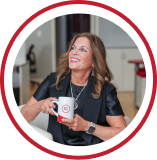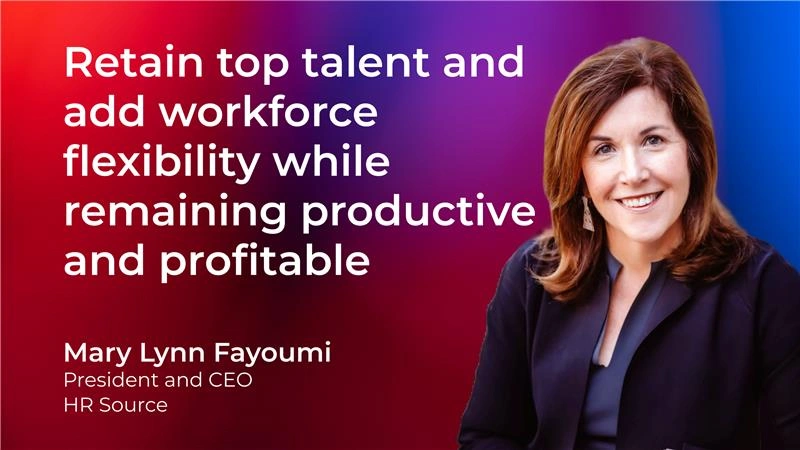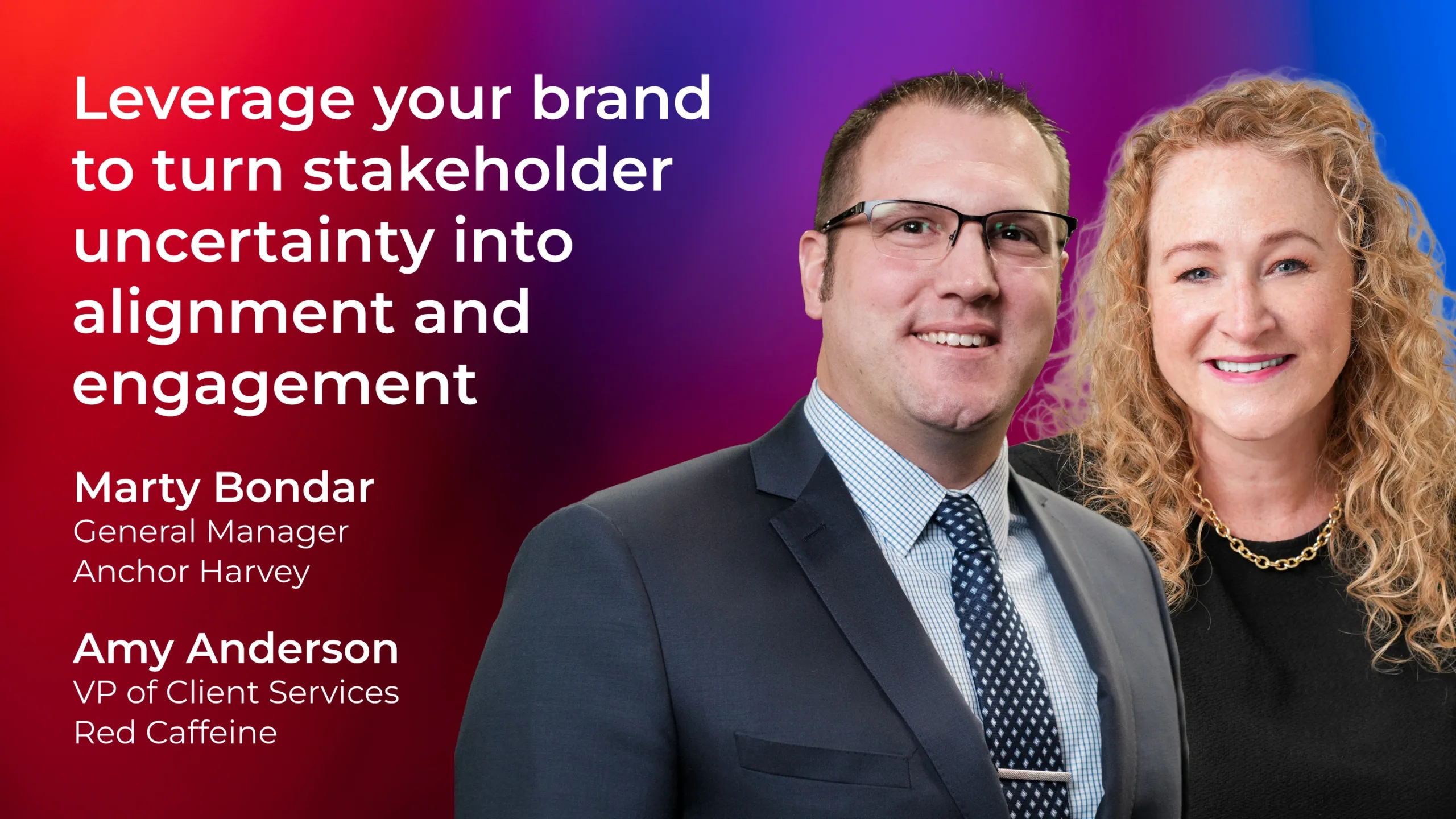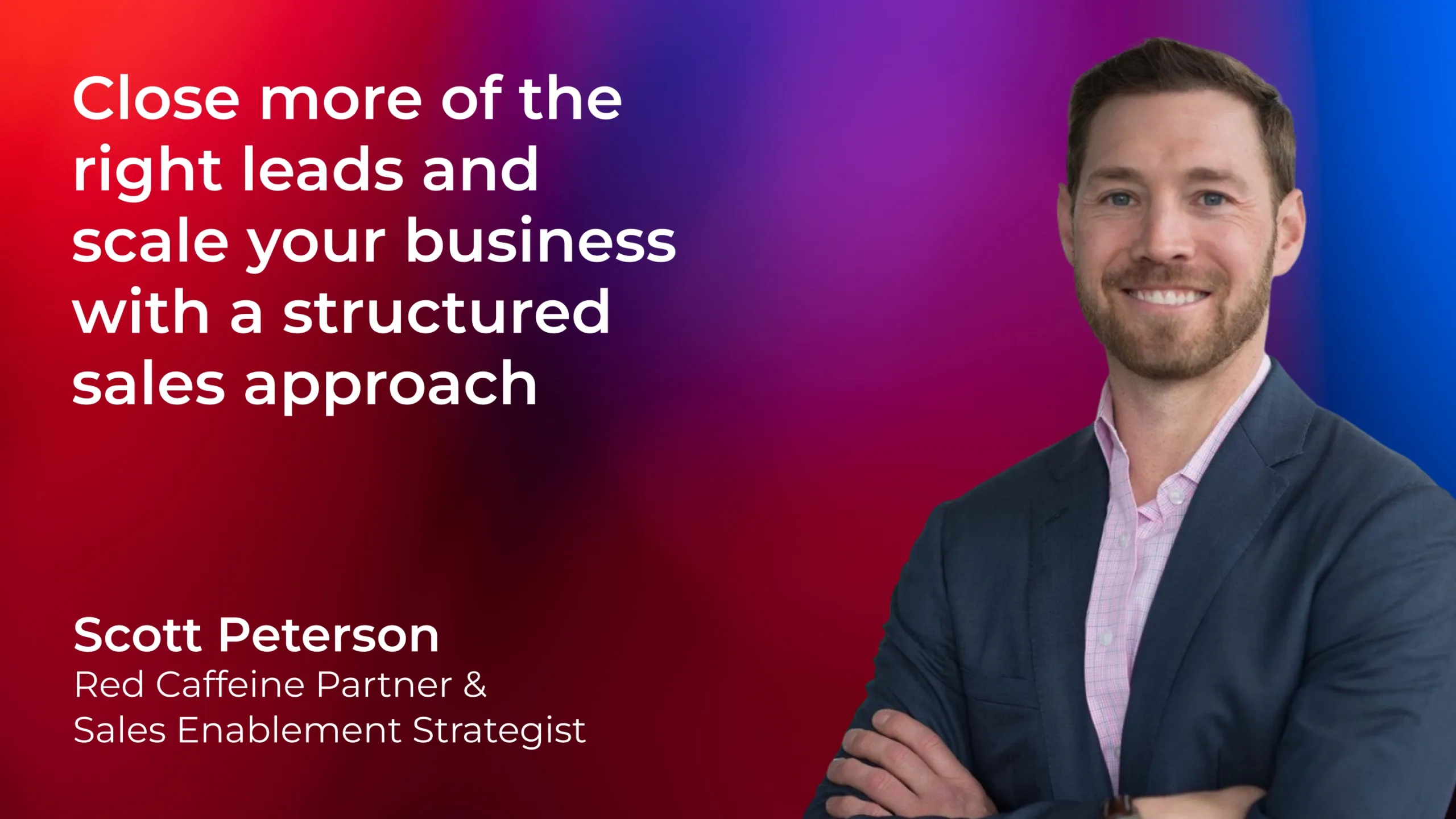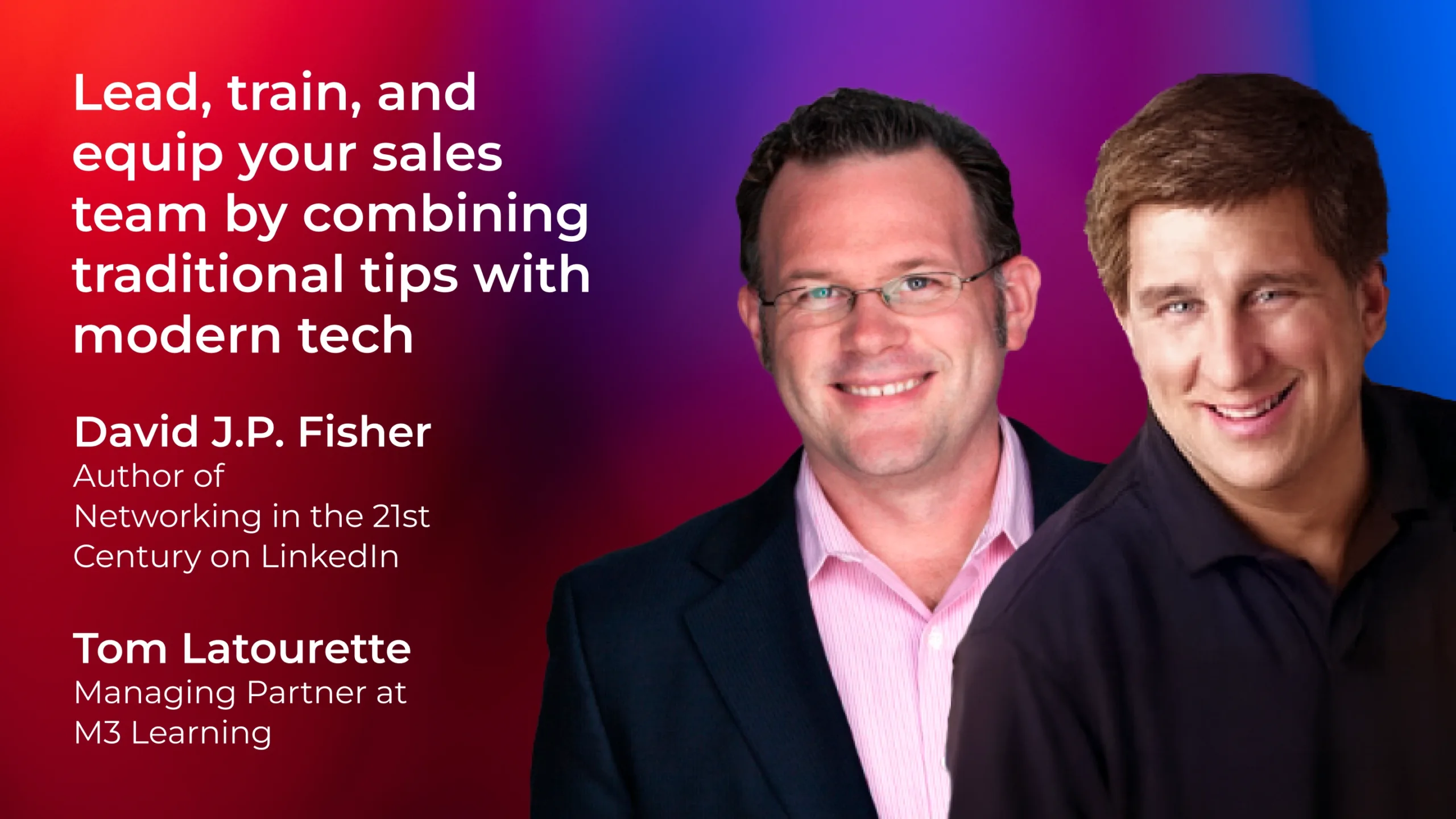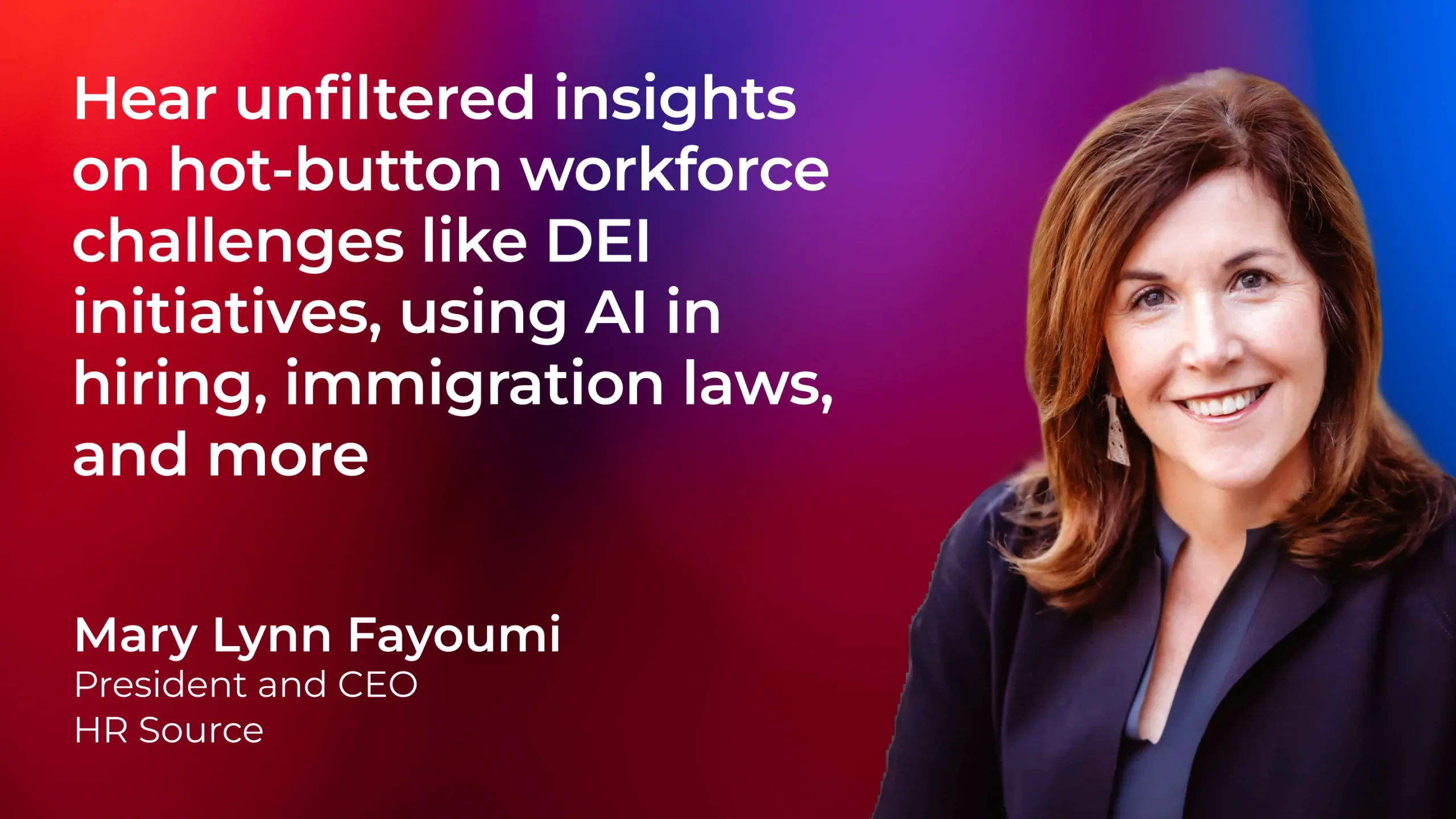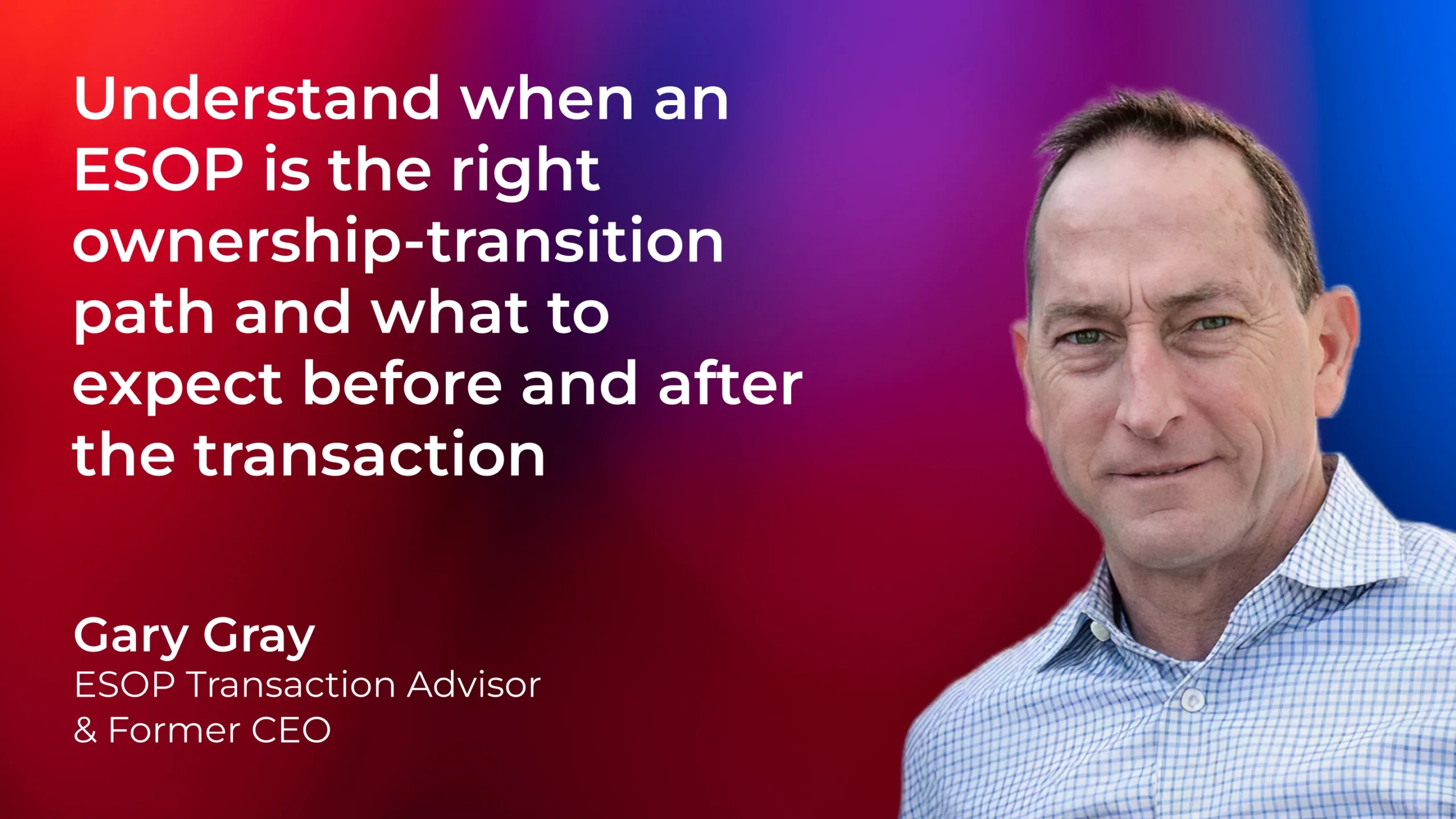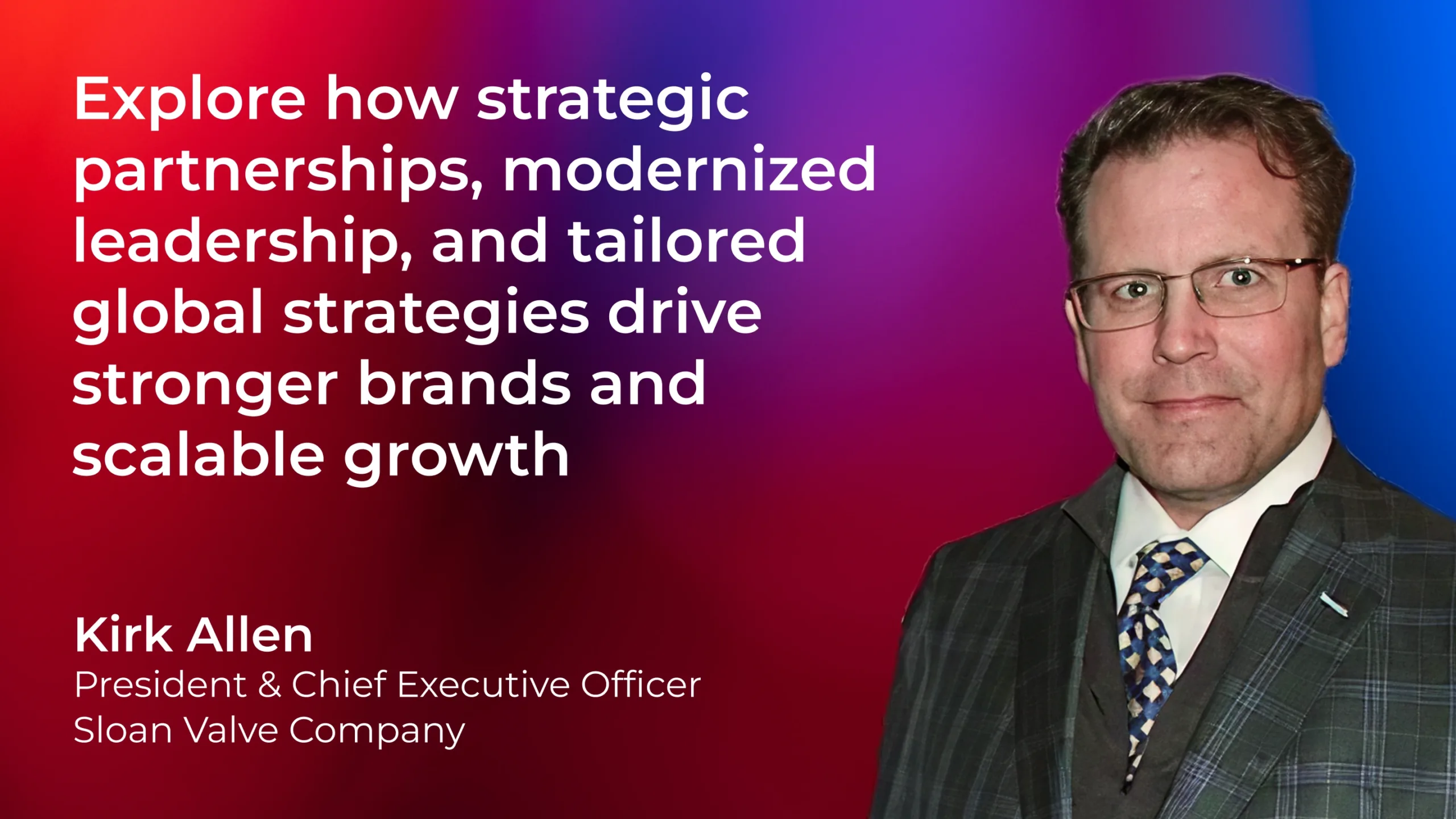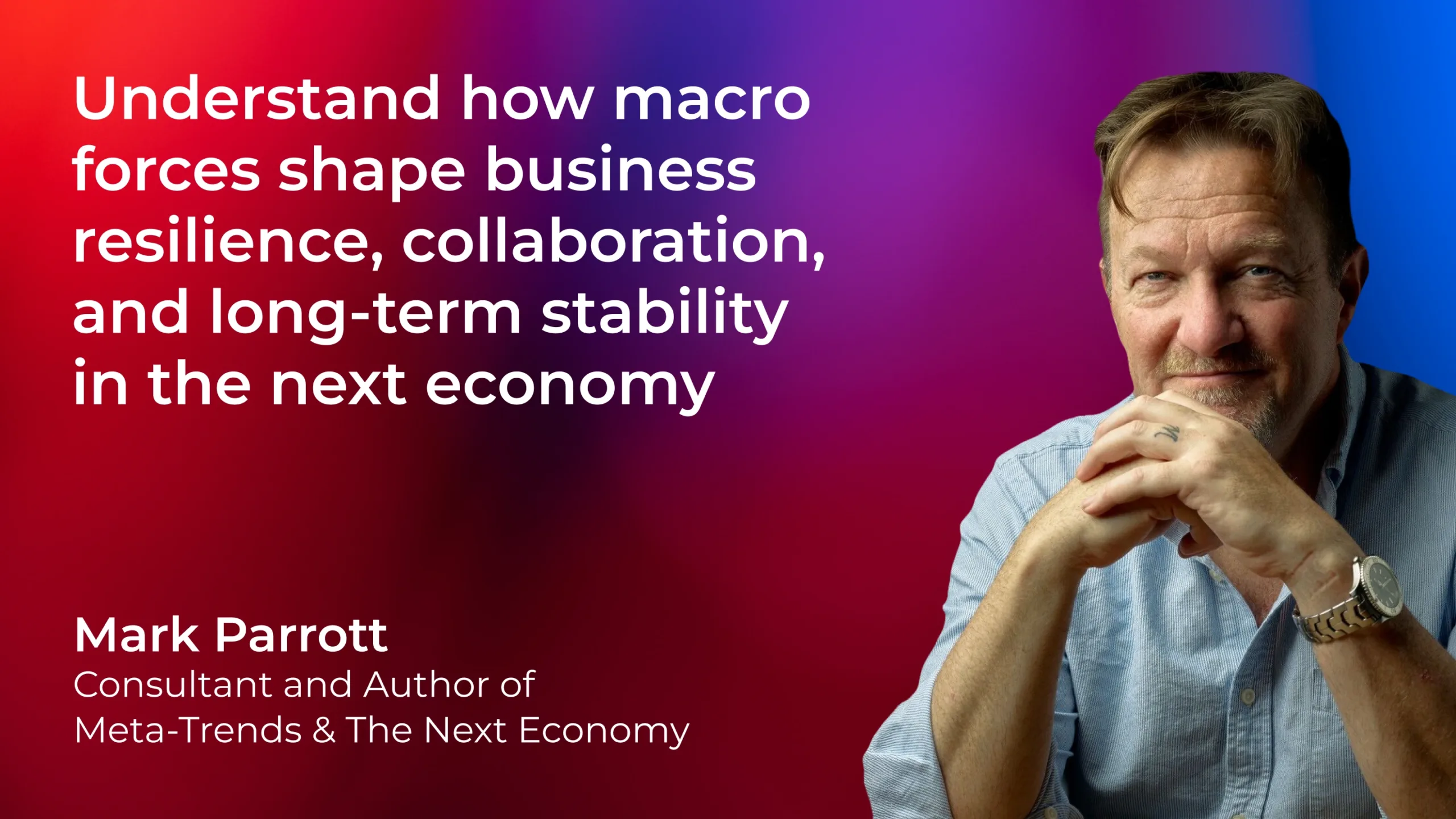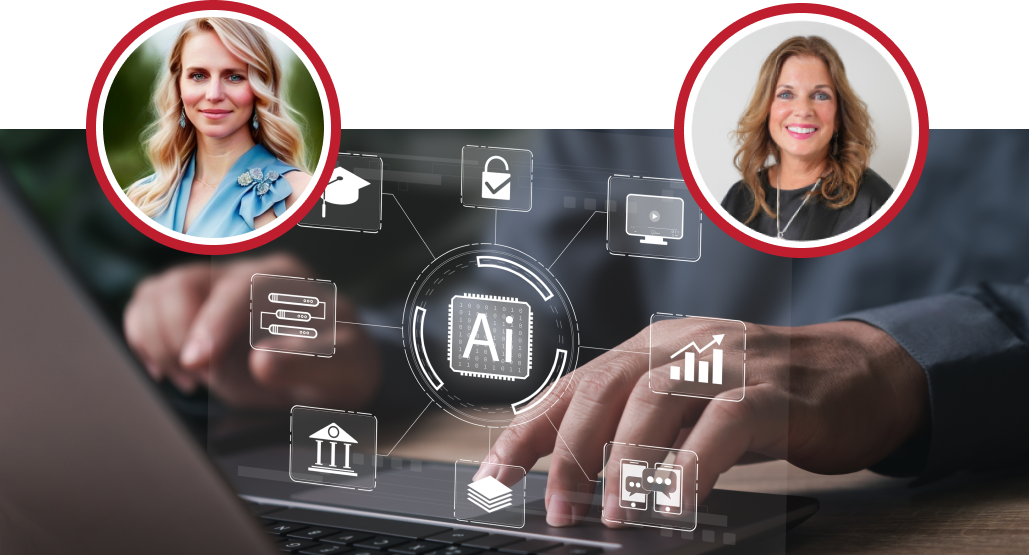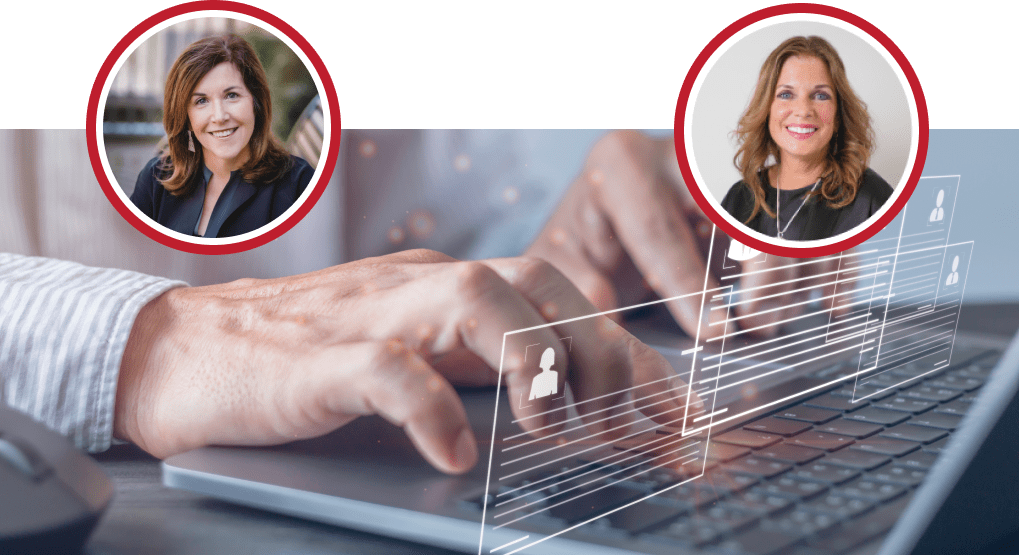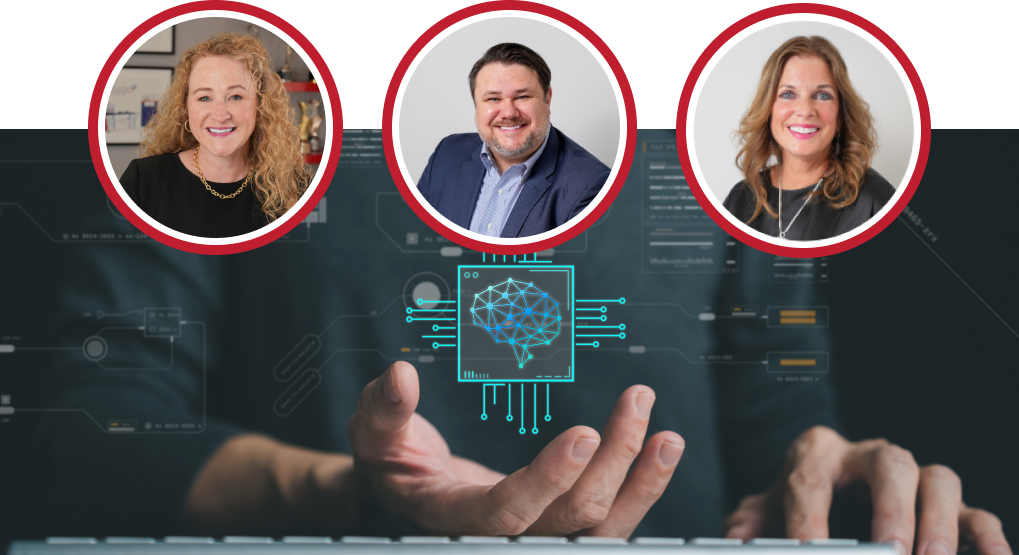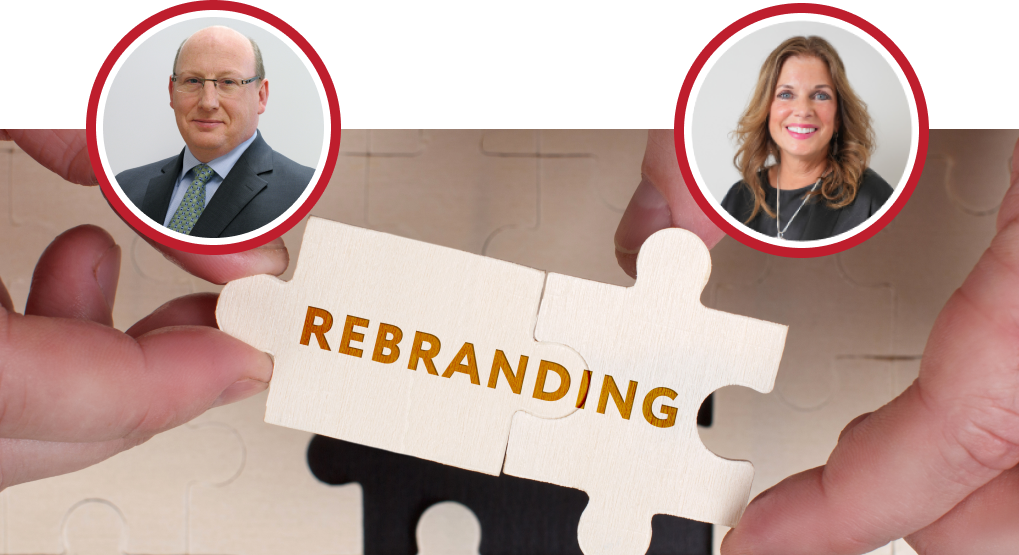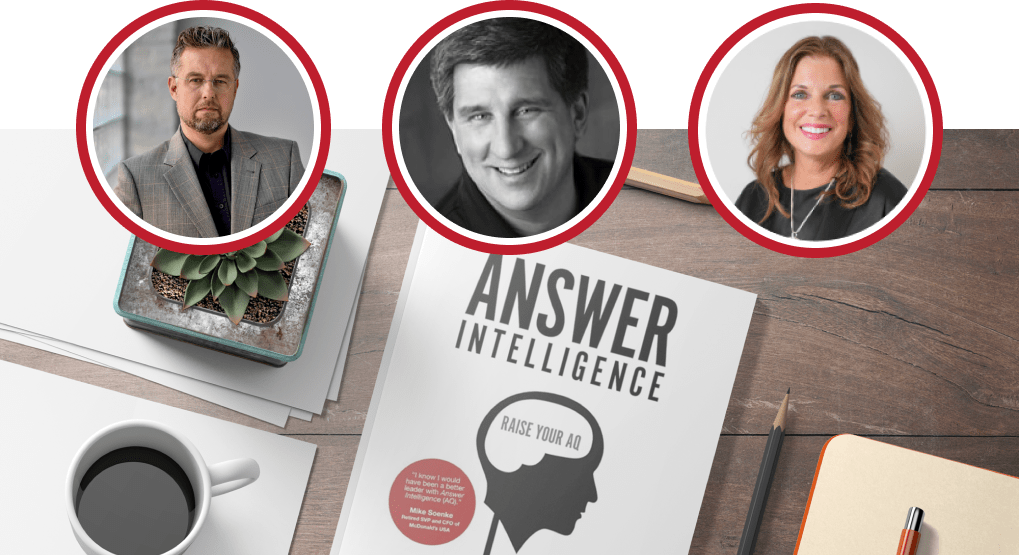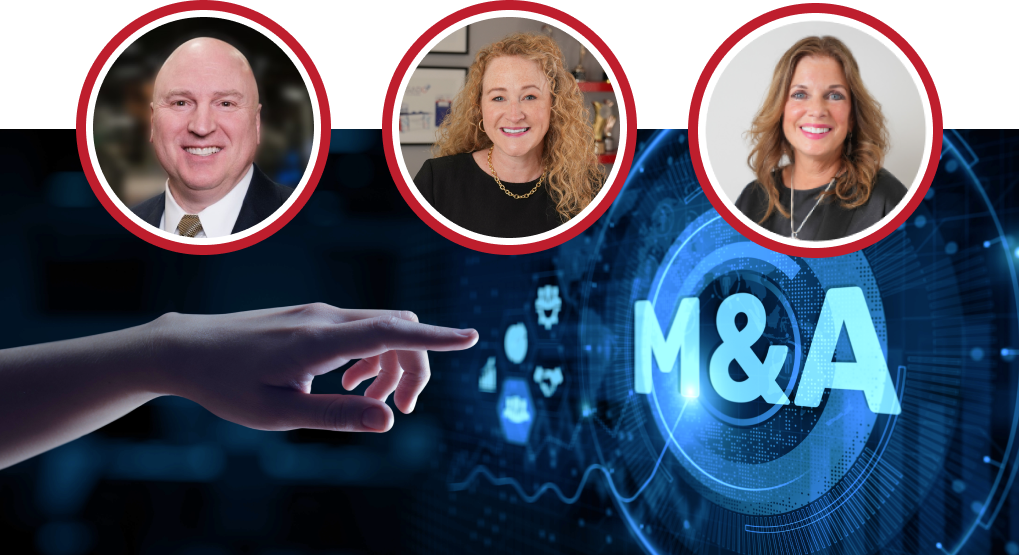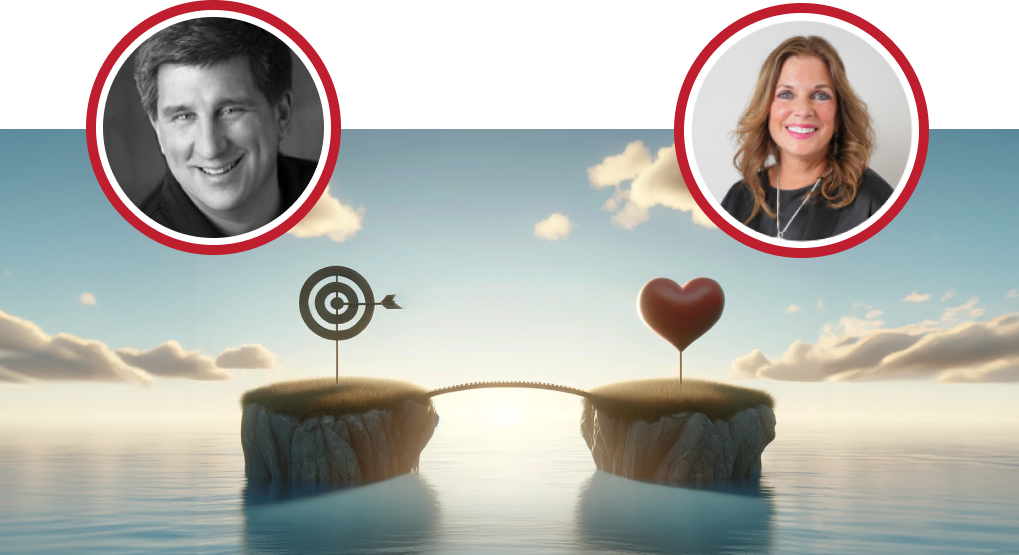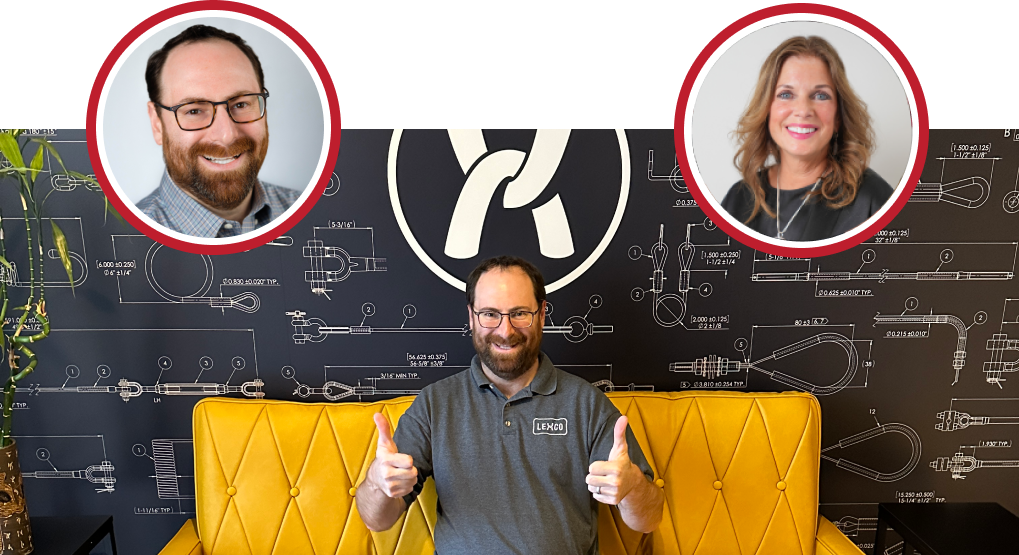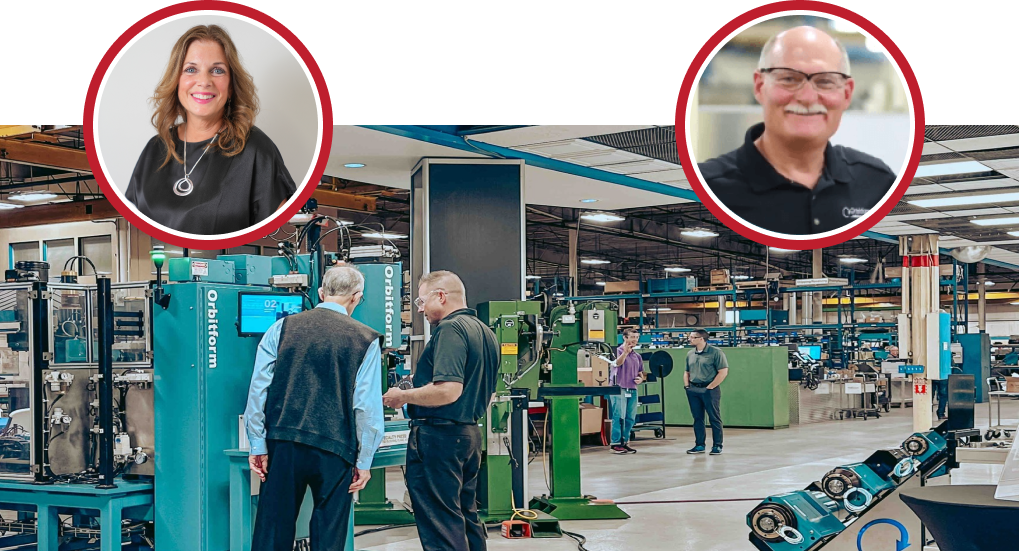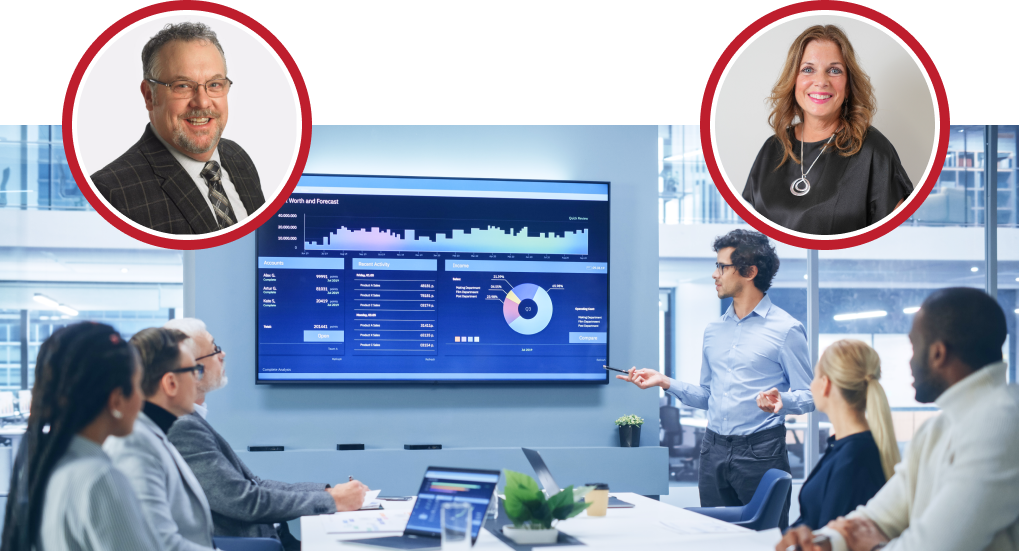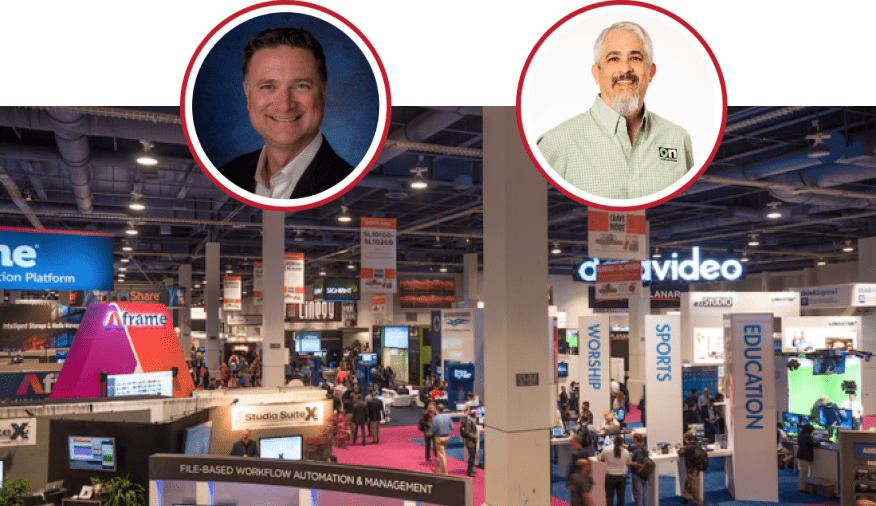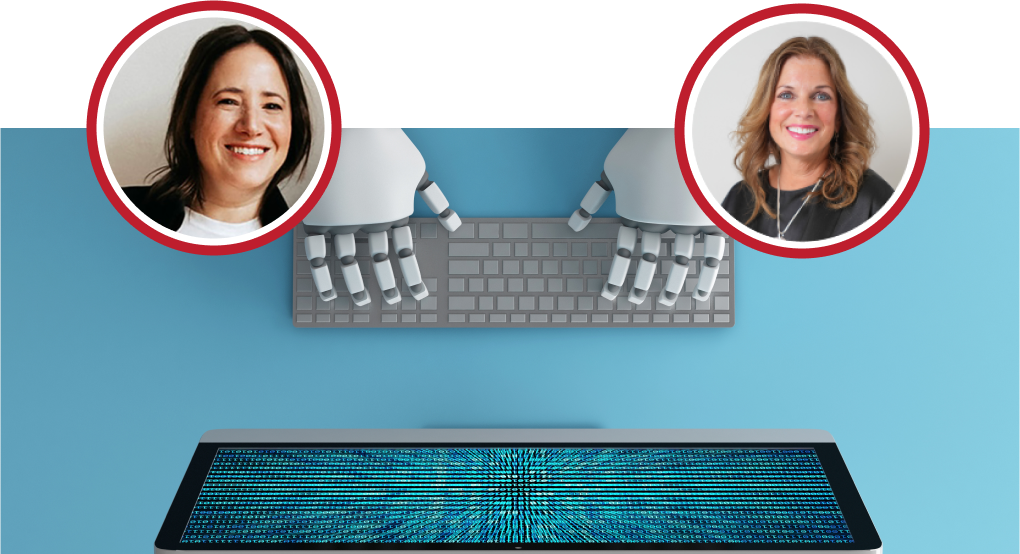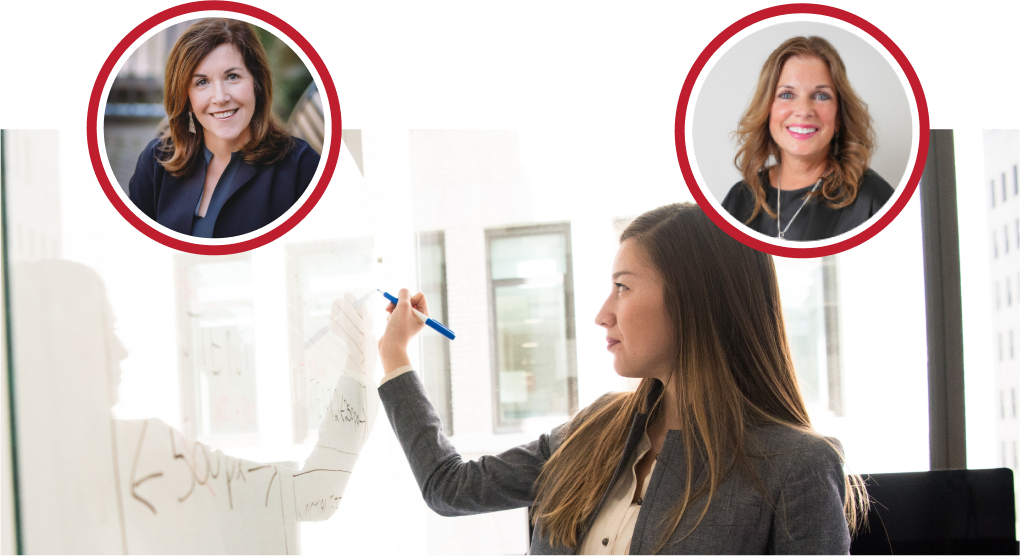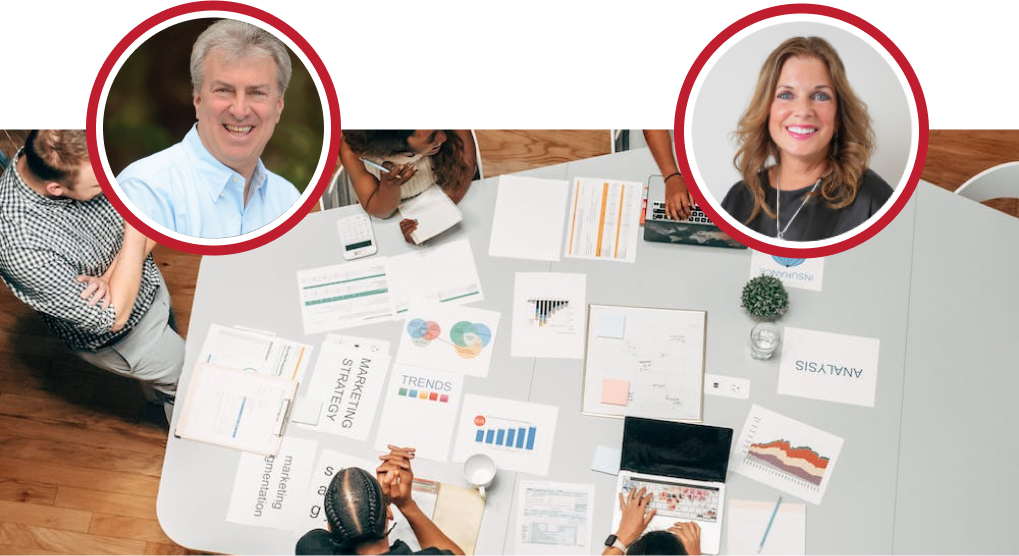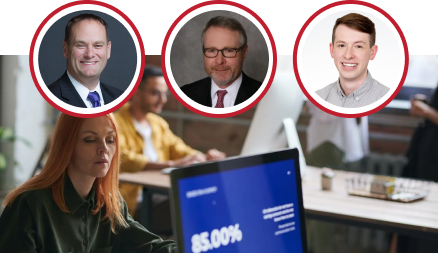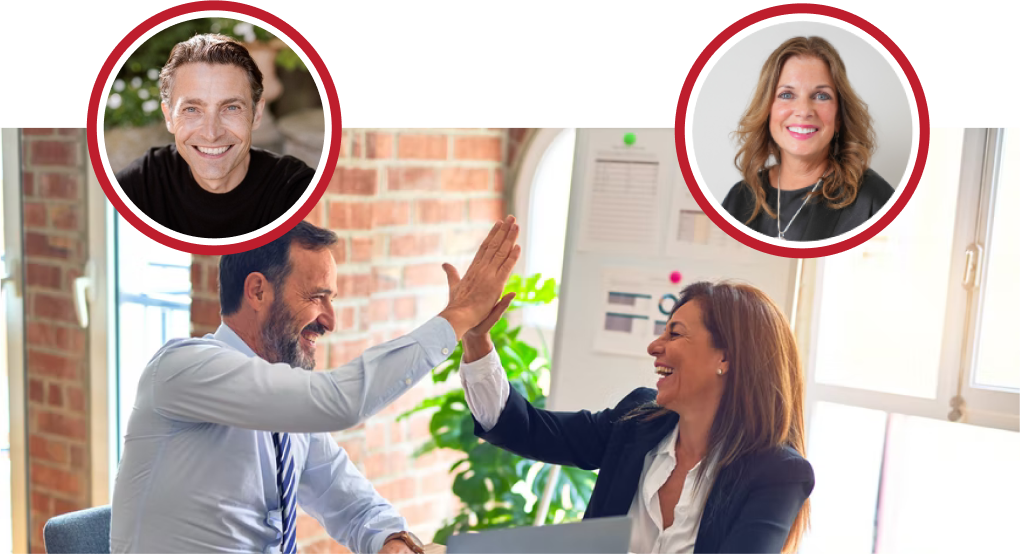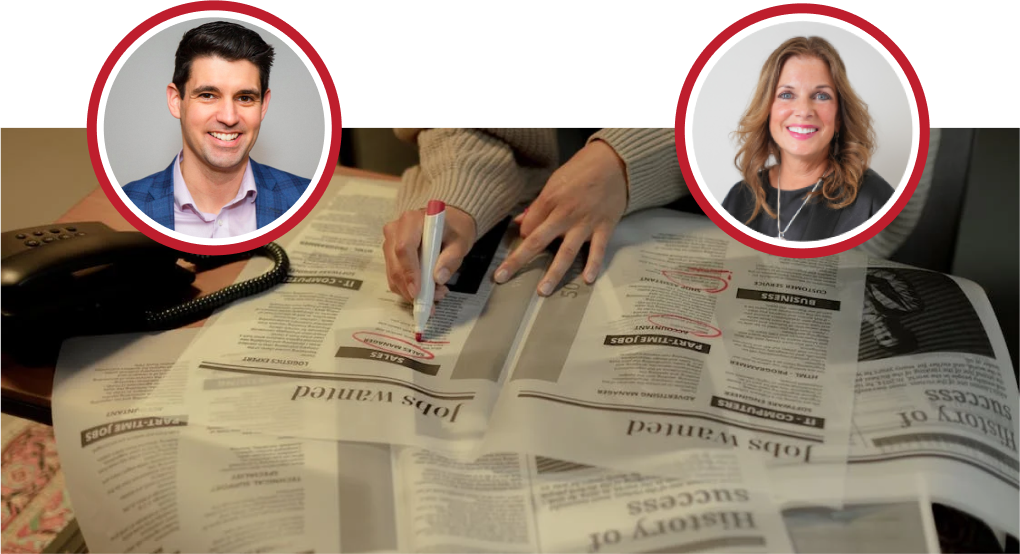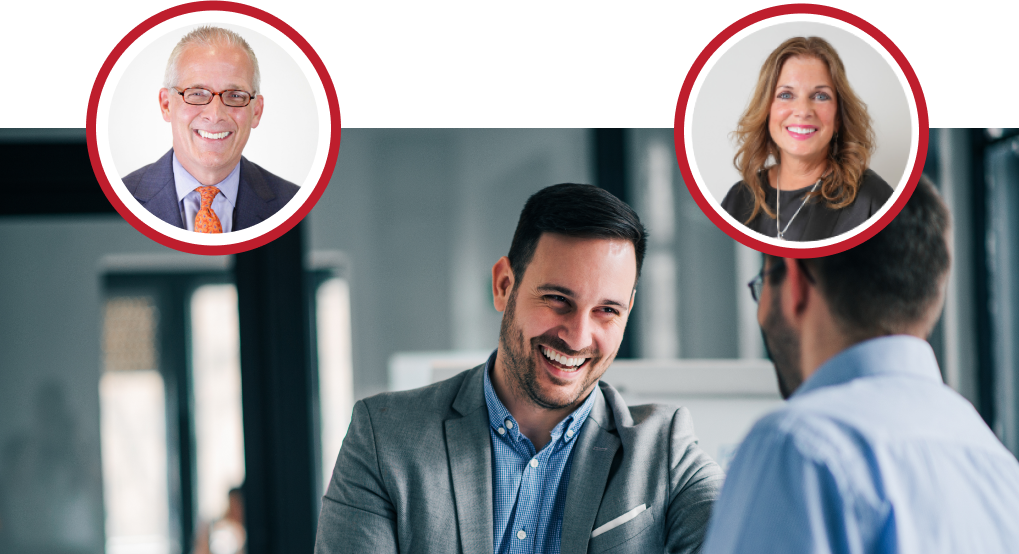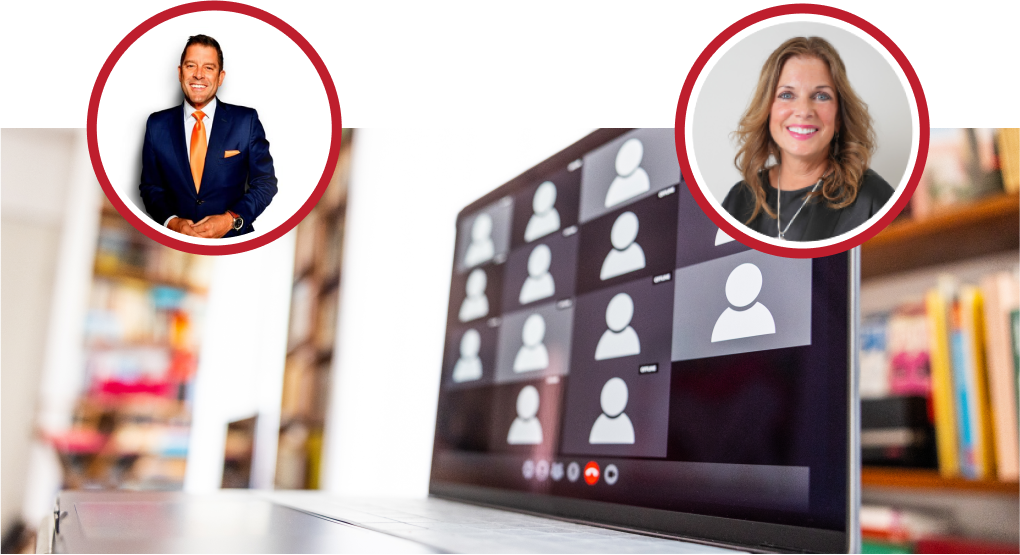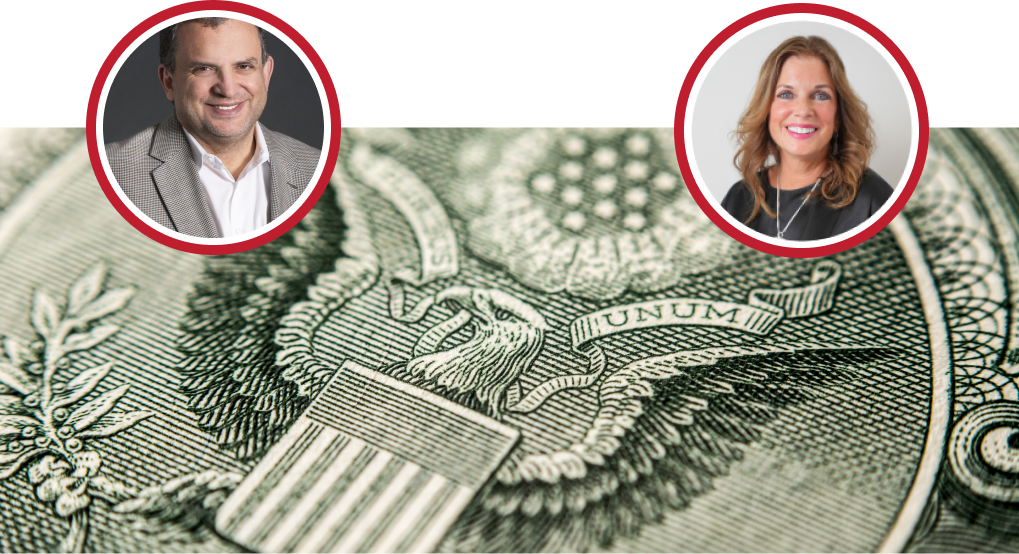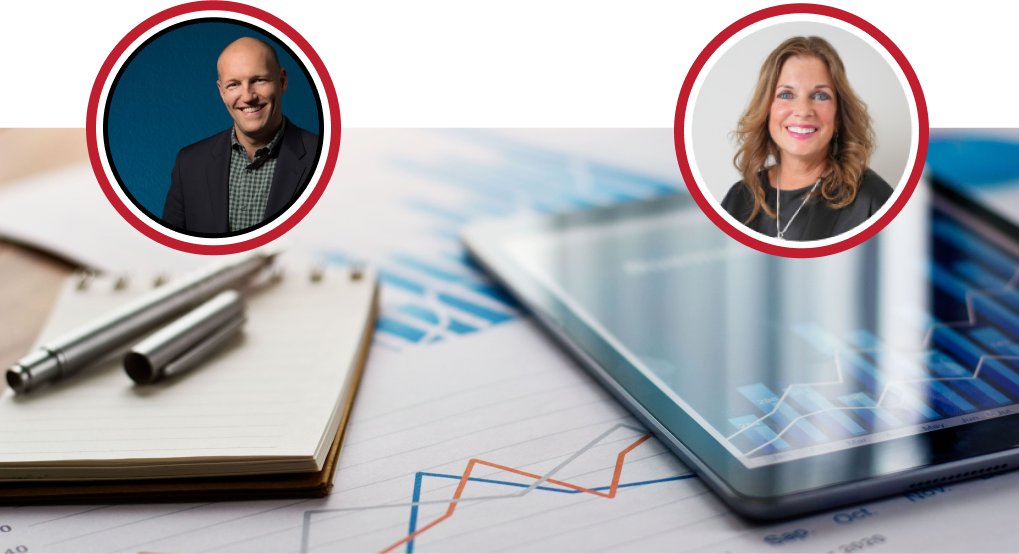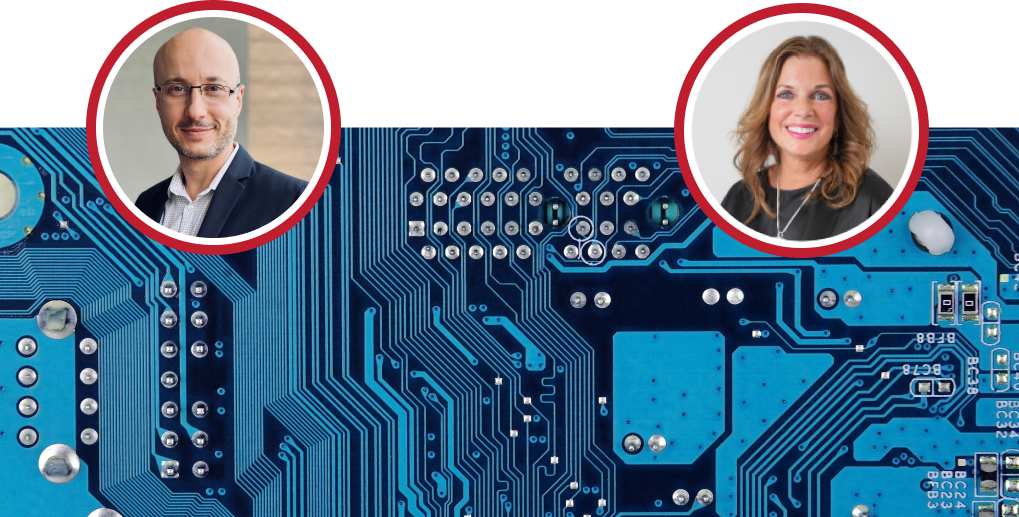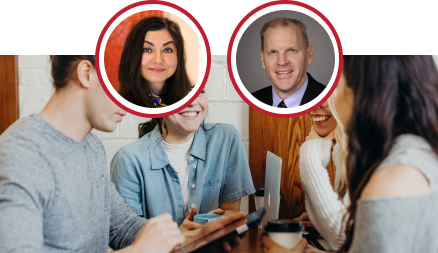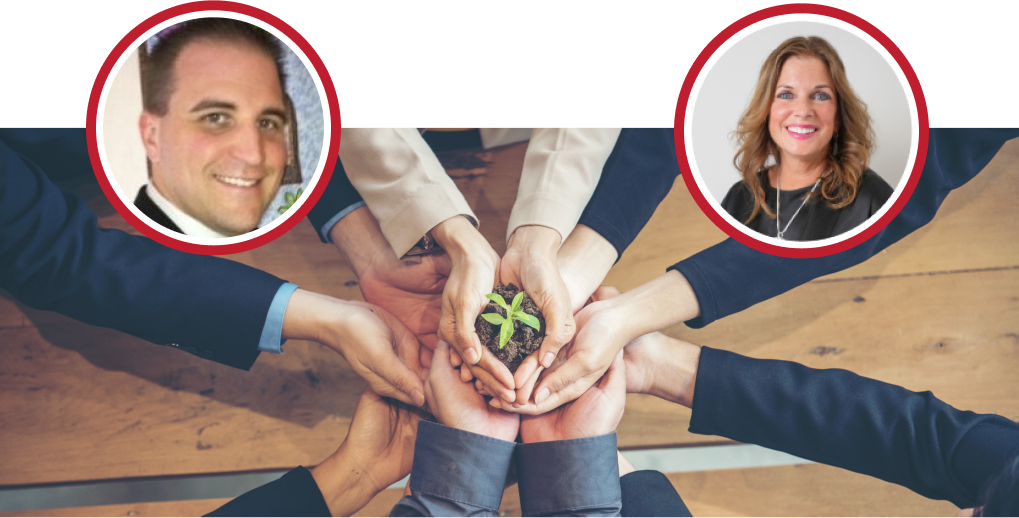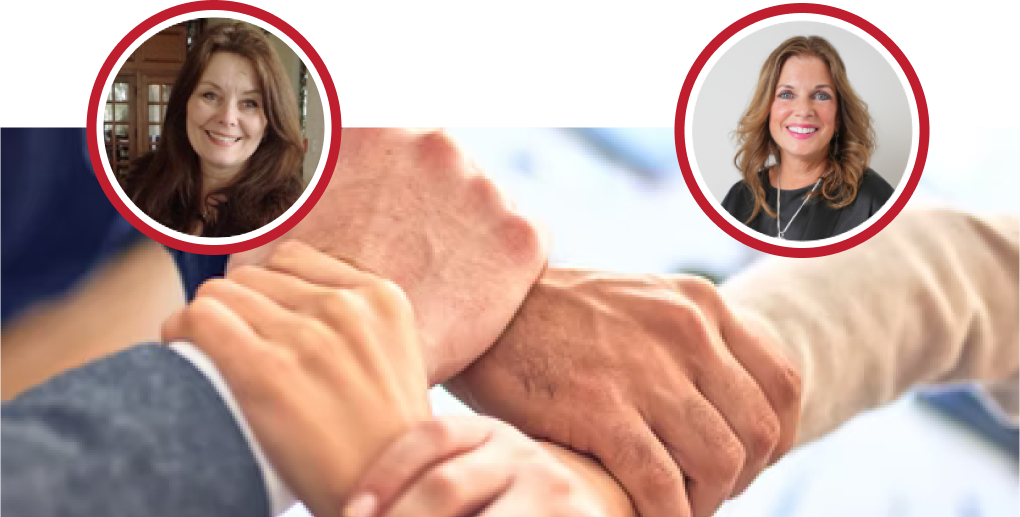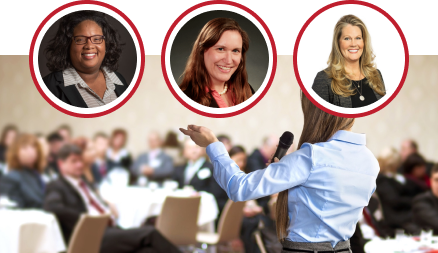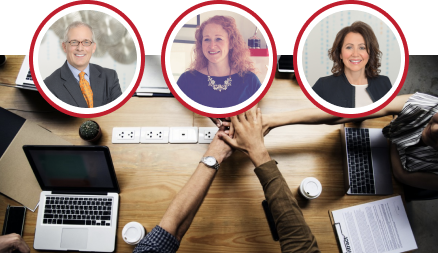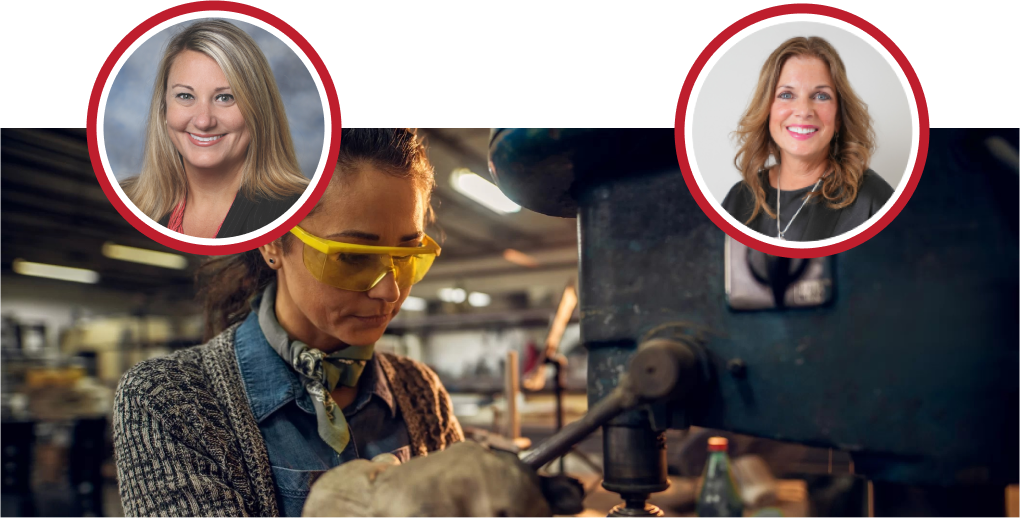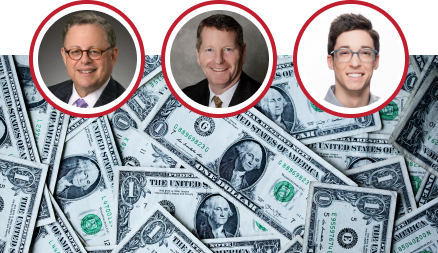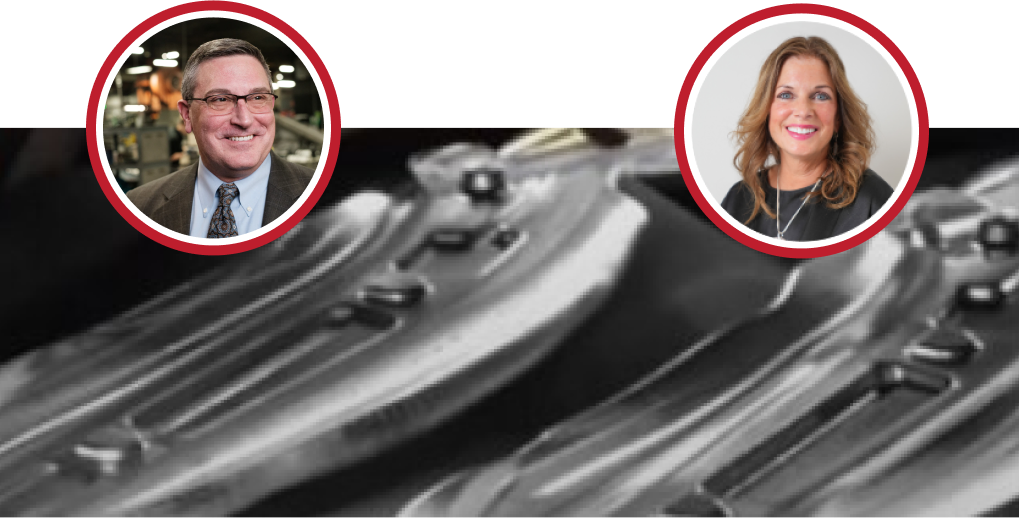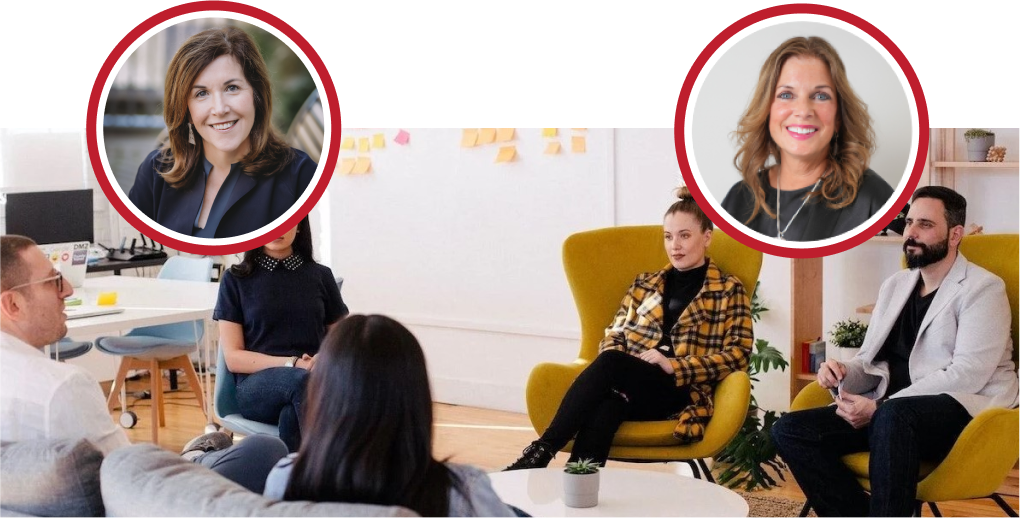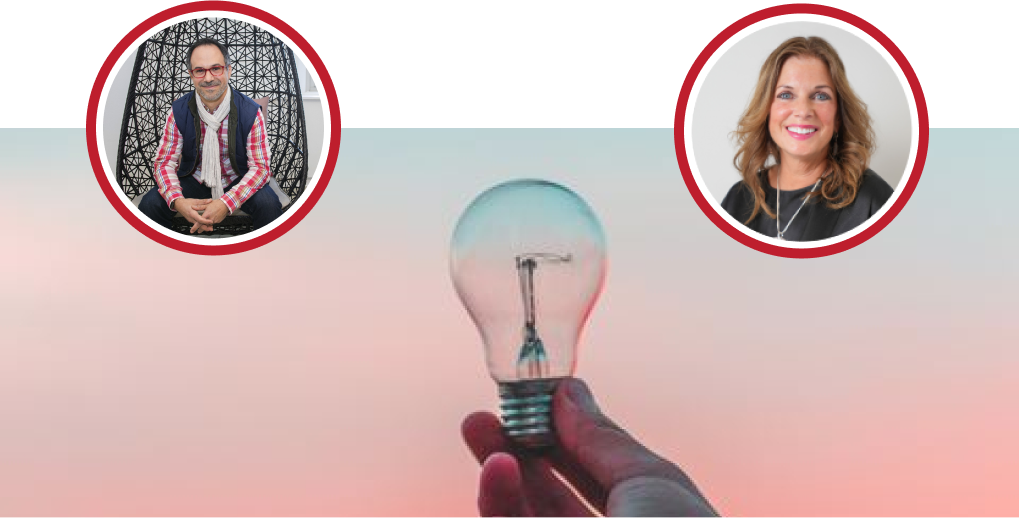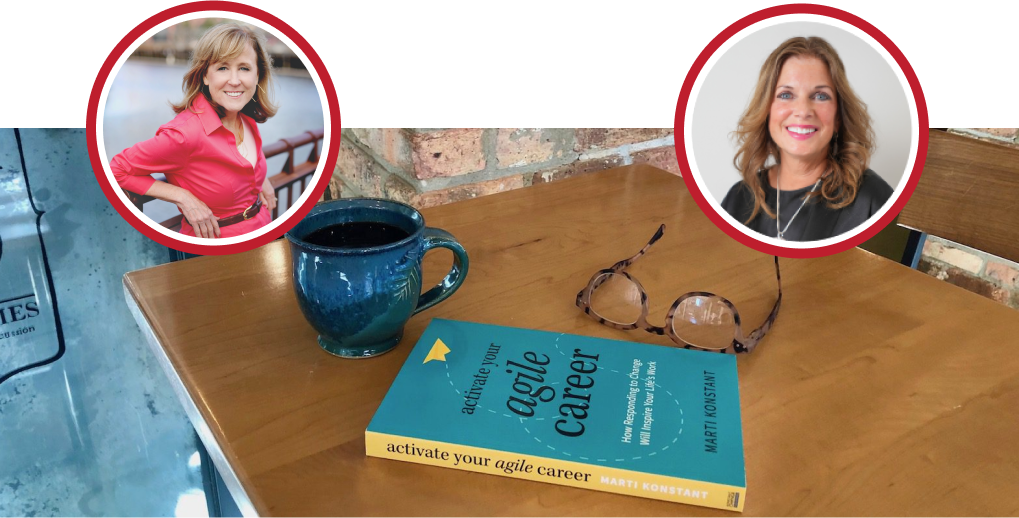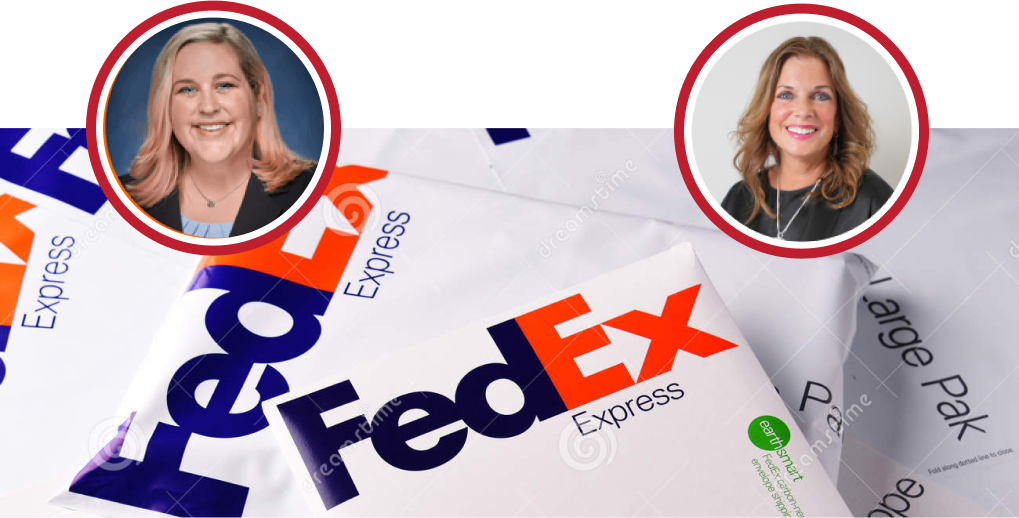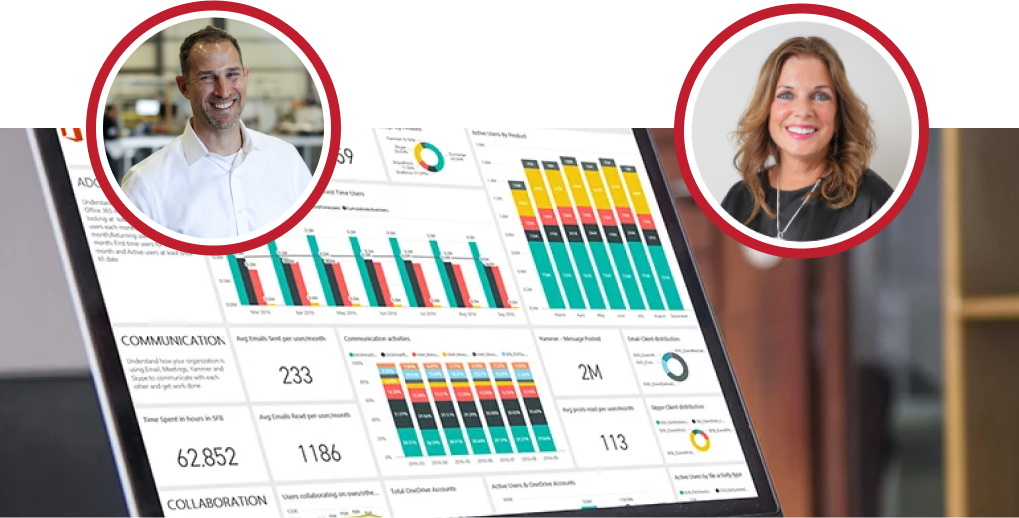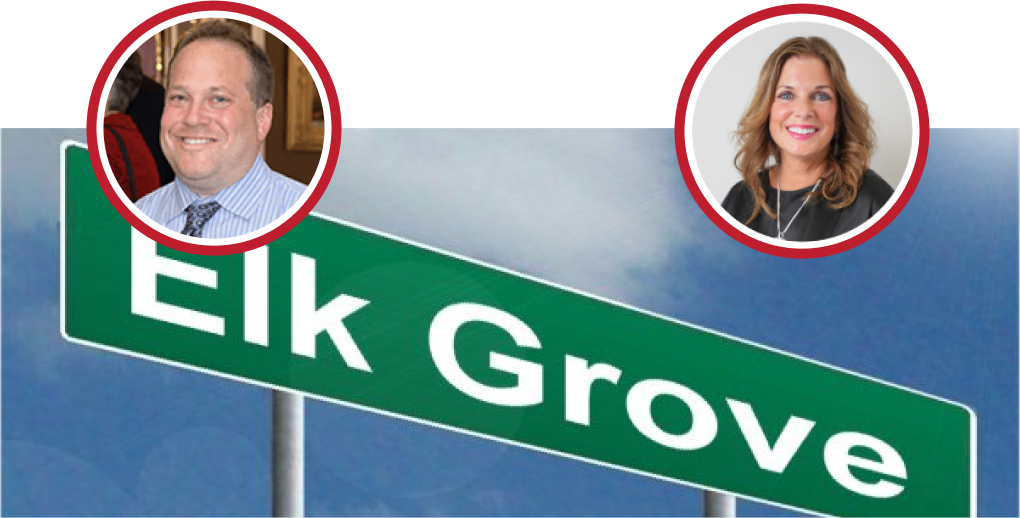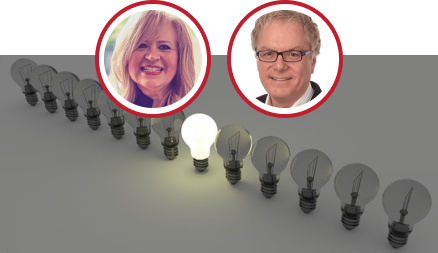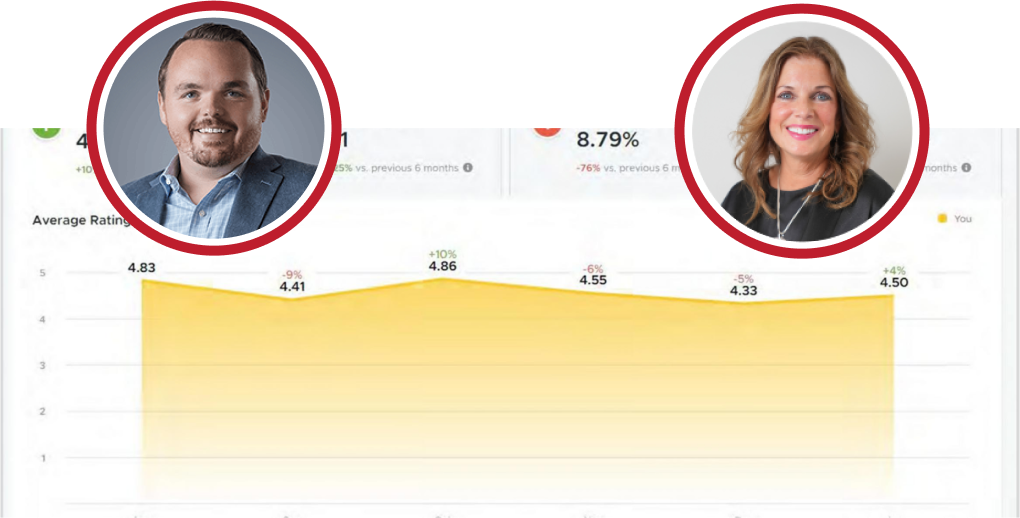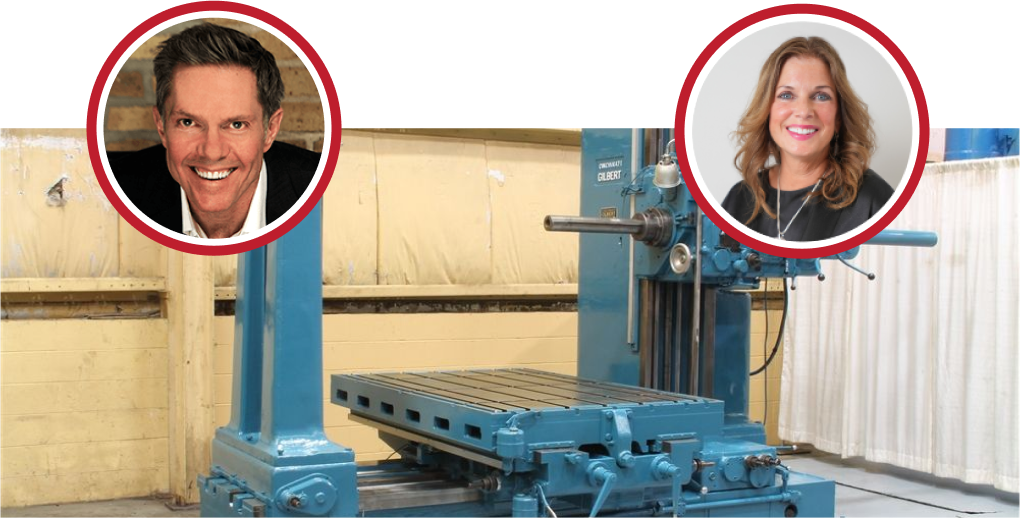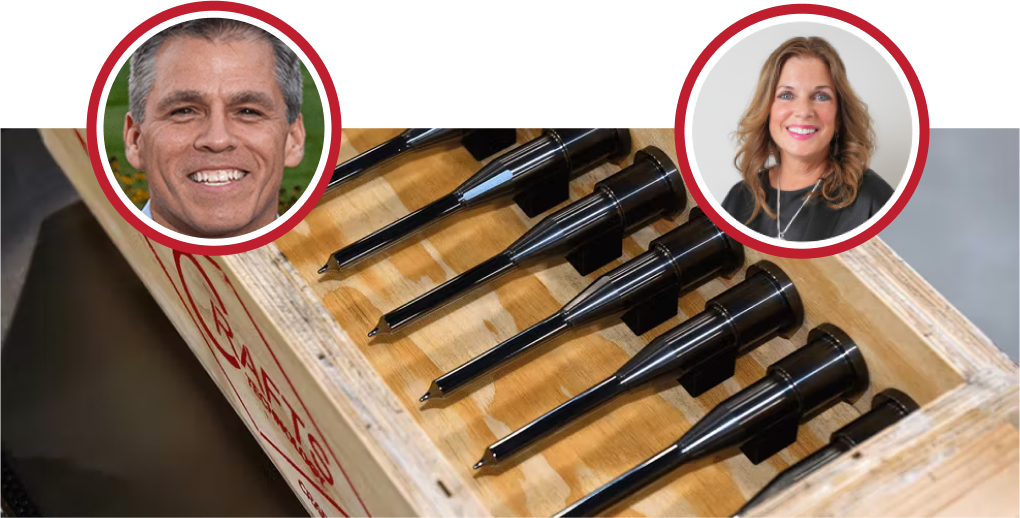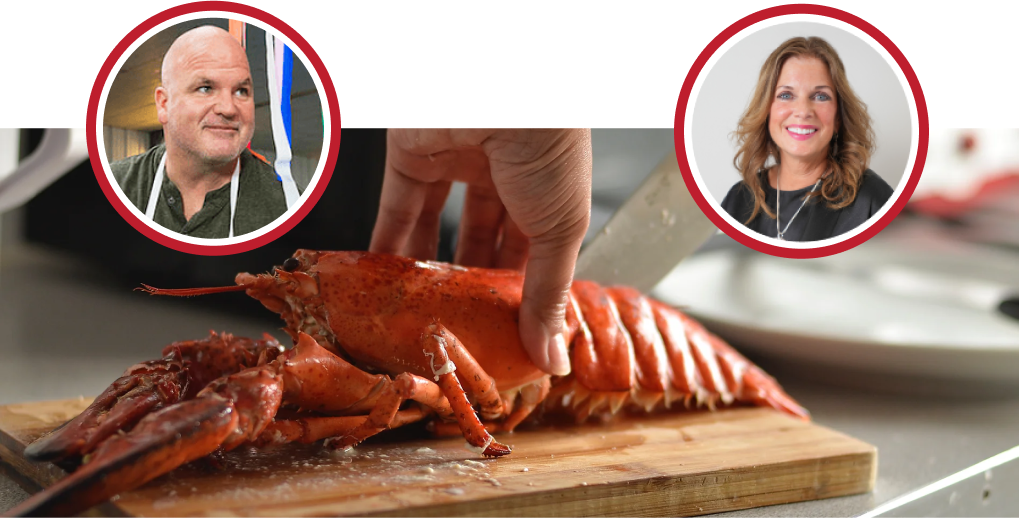Kathy: Welcome to Business. As unusual, today we’re going to talk about outrebounding a better way to grow sales in 2023, so we’re going to get started in just a few minutes. Still, if you are attending via our live stream, Parker Lee is going to be on hand to manage the chat, so if you’ve got questions, please feed them into the chat, and he will feed them directly to us. We are going to give away a few books today, so get your questions ready so you can get a chance to win one of Skip’s new books on Outbounding. I’m Kathy Steele, and I’m the CEO of Red Сaffeine and your host today. For those of you unfamiliar with Red Caffeine, we’re a growth consultancy, and it’s our mission to build badass brands that people want to work for. Um, you’re probably here today because you want to grow your business through organic sales or expand into markets, but quality inbound leads are drying up. You aren’t seeing the results from your marketing efforts, uh, so you’re not alone if you’re like most people in a business development role or if you’re working with people in a business development role, you realize that sales and selling in 2023 are really different from what was just a few years ago people aren’t answering their phones or even working in the office. The Gatekeepers and phone screening systems have made it much harder to get your Prospect on the phone. We’ve also seen a reduction inface-to-face conversations networking events and lunches that we used to you know get access to before so if any of this sounds familiar to you, you are in the right place at Red Сaffeine we’ve changed the way uh that companies think about growth was a simple and universal truth growth is a choice and it’s a choice to get better in a hundred small ways that make a big difference one of the ways that we help company is by leveling up their sales and marketing strategy around proven best practices and we don’t just make it up as we go along, we’re constantly adapting our approach based on what we learn from industry experts like our two guests today from M3 learning Skip Miller and Tom lad array are here to share research from surveys they’ve conducted with top Executives for the past 15 quarters those share some Trends changes in what is expected from sales in 2023 and uh and what you should expect if you’re being really asked to do more with less , they’ll tell you where to focus your time how to shorten the sales cycle, and most importantly Skip’s going to share information from his book that will show you how to instantly become better at outbounding with better messaging the right Cadence and effective and effect with in effective sequencing, gosh that was hard to get though.
Thank you so much for joining us today!
Skip: Pleasure.
Tom: Yeah.
Kathy: I always like to just start with a little opportunity to give you guys a chance to introduce yourself and tell us a fun fact that people might not see on your LinkedIn bio or in the Bios. Tom, why don’t you kick us off?
Tom: Uh, so I’m Tom Letter Ray, managing partner of M3 Learning here in the Midwest. About 22 23 years ago, I was a Vice President of Sales. I had 50 sales people five regional managers, and uh one of my regional managers read Skip Miller’s book Proactive Sales Management. We hired Skip to work with our team, and my head was blown. It was one of those; well, I wish I had known this 10 or 15 years ago. Skip’s been a sales mentor and a good friend uh to me since that time, and I’ve been lucky enough to coach and train the M3 sales Philosophy for businesses for the last 10 years.
Kathy: Oh, fantastic, and what else is Nat on the? Tell us a little personal fun fact.
Tom: Uh, I am a children’s book author, and my newest book, Opera Baby, is uh ju, st coming back from Amazon, and so you can see about that, and uh, 100 of the proceeds go to benefit a charity Foundation that helps local families fighting cancer so.
Kathy: Uh, well, I love your charity efforts. I’ve been, you know, happy to be a part of them with the B2B foundation, so let’s get some more Book Sales going, and our other author here, uh, as our guest today, Skip Miller, why don’t you give us a little background about you and your career and a fun fact.
Tom: Let’s see, born and raised in Cleveland, Ohio, so I’m a big, uh Guardians Indians Browns fan. Uh, I made sure all my kids are, too. I moved to California 25 years ago. Um, have a fun time. I was a salesperson, sales manager, and V.P. sales president of some companies. Uh, the last company I was with wanted me to move back to Connecticut to help him work, and I’m not moving back to the East Coast. I kind of like California, so I said thanks, I’ll start my own thing, and that was uh, 27 years ago, and um, typically we work with that 20 to 200 million dollar companies as they try to grow. I’ve been doing that for a long time, so we’ve learned quite a bit, and I love doing what I’m doing, basically helping salespeople and managers.
Kathy: Oh, I think we just lost your volume skip, so, uh, did we lose him?
Tom: Yeah, I’ll do the Garrett Morris. I think what he was trying to say was, uh, he uh helps salespeople, sales managers, you know, run better conversations metric measure and uh have really strong conversations with their clients and Prospects.
Kathy: Well, as we know, Tom, sales are the lifeblood of every business, and it’s always it’s sometimes not, you know, where people focus, and it’s usually not the core competency of most organizations and the way they found their business so lets you know to jump in, and as we’re trying to wait to see if Skip can get his volume adjusted and jump in. Um, let’s take a look at some of the trend data um that you guys have looked at over the last 15 months. I mean, most of our clients have really experienced some significant growth over the last couple of years. Still, you conduct this survey of senior leaders, so take us through some of the things and metrics that you have been seeing and hearing from in the past few years around what’s going on with sales.
Tom: Skip are you uh are you able to chat or looks like we might so so basically Kathy we run this um uh on a monthly basis we’ve been doing it pretty much quarterly where we’re interviewing key executives to get their data back to us uh in terms of what’s Happening inside their organizations and you know one of the things we definitely are seeing is that uh folks are you know feeling somewhat optimistic I mean they’re uh I think there’s an interesting statistic that you know most folks when we looked at last year um you know about 80 percent of people hit their plan but everyone starts the year with already going a hundred percent we’ve got a hit last year and more so everybody kind of walks into it knowing well there’s a very good chance we’re not going to hit our plan because historically no organization hits that 100 of the time but we all start our budgeting and planning cycle thinking that right so we’re definitely seeing that from folks that you know there is an expectation for us to be able to hit plan. Um, Skip, are you back with us?
Skip: No idea what happened.
Tom: There you go, yeah.
Kathy: There we are.
Skip: So the survey we’re doing is we’ve been doing it for 14 15 15 semi-quarters so CEOs again 220 times a billion dollar company, and we’ve been asking them, you know, thinking how you are looking and this one right now no surprise we had a tough Q4, uh a lot of stuff slipped going away um their confidence of making kind of high but some doubts starting to creep in usual you know we’re kind of like in a recession a tough time next slide you know we’re trying to get them really understand anywhere a critical event and um they 30 percent of my business they come from new markets and it’s been consistent you know we’re trying to upgrade new products to our current our customers but still says we have to hunt we have to go a new market which is fine do that what investments are you making this business so as you see what the next slide because that is so high new logos and new business that’s fine so what is it what are the key are our customers are looking at to try to get better at.
Tom: Skip folks are, uh, we’re missing you every other word, and it looks like, uh, that is happening across the board. So uh, I’ll kind of recap what we’ve heard is definitely there’s this place of we got to get new logos uh business is really focused on how do we get new logos how do we find new clients but then there’s also the space of how do we land and expand inside of existing accounts that we already have that space of how do we Prospect an outbound even though inside the organizations that we’re working powerfully with the attic slide.
Skip: What are you really focusing on? Number one, our forecast accuracy because, as you can see with the fourth but look at numbers threes and four and five, we’ve got to get better at, you know, getting uh visions all the drivers are saying we because the inbound leads are drying up so we’ll move to outbound and Kathy when I wrote my the uh I talked to a bunch of account Executives about I sent one email last week. I’m waiting to hear the account executive salespeople don’t really know hold on, which is why we wrote the book.
Kathy: Right. A lot of times, they’re, you know, really responding to requests that are coming in more inbound inquiries. They have there they seem much more prepared to have those conversations because there’s, you know, a need identified versus flipping the script and being, able to, you know, to be more proactive about selling and more proactive about creating that relationship.
Tom: Yeah as you can see on this slide, what that causes is, you know, problems with your forecast accuracy, and now there’s no energy I mean, there’s energy when people reply to us or at least you know they start the conversation, but now when I have to as a sales rep when I have to create that conversation create that energy maybe even move the client from a place where they didn’t even know they had a problem that can be an issue for salespeople today this whole you know concept of outbounding and helping a client see a problem that maybe they didn’t recognize they were having um that’s front and center for organizations today because they’re recognizing that their marketing activities aren’t creating enough leads and opportunities for them. Kathy, are you hearing some of that same thing, too?
Kathy: You know, absolutely. I mean, I think that, um, people are expecting, um, you know, we’re expected, you know, we all have fairly lean teams. Most of our clients have fairly lean teams, and so to be able to understand, you know, what, um, is going on in the minds of buyers, you know, to compete against some of the other things that are out going on from a news standpoint in the marketplace, um it’s very complex, and so I don’t. Frankly, I’ve just never really been a Believer in inbound only. I think, you know, we’ve always prescribed a multi-channel approach. People are looking for um information in so many different ways. Nobody can be everywhere.
Tom: Yeah, so Skip’s going to try. Yeah, there you go.
Skip : And let’s see if this works recession slow down taxation whatever you want to call it how do we get more leads how do we generate these well today a prospect in your Market is buying something to think about that while we’re worried about times session you know we lost a potential sale coming up with the reasons why it’s getting harder to sell is the perfect time for our customers to buy the next slide will show you what are some of the accessibility to potential sales people out there when things are going well they’ll to try something new they’re not going to take a risk are above the line see sweet buyers everybody make money they have to make a change really emphasize a couple of words in this is in this pot change people hate the change they hate I in my outbounding will use that extent my name is Skip Miller with the ABC company as you’re looking at probably have to change yeah I do and I hate great curiosity word and I would use it extend biggest complaints sales people get is when we sell a product of the clients so let’s make sure we fix this issue the bottom line is the above the line and below the line buyer the above the lines to see swear during a downturn CEO’s they’re all worried they’re all concerned they so it’s a perfect time to look at the next slide.
Tom: Hey Skip, before you go there because we’re still missing every word or two of yours I think the just I think it’s really important. This is a critically important slide I just want to recap it. I think the biggest piece here, Kathy, is it’s as a salesperson; how do I get the con? I mean, one, I have to have a high level of confidence knowing that I’ve got to create a conversation. What Skip is saying here is we see that you know above the line folks they have to change, they know they have to change, they have to fix something, and this is exactly the time to make those calls, you know, uh exactly you know one way I mean what choice do we have either we can curl up in a fetal position, and you know to stay in the corner, or we can go you know what this is the perfect time to have these conversations because I can’t actually help my client navigate through that change.
Kathy: Right, and Tom, we did get a question from the audience, so you know, I think we spoke to it on this previous slide a couple of these uh things, but what are some of the top um risks or changes that you know you’re hearing from prospects today like as the recession looms what are some of the things that you’re you know you’re hearing in these conversations are in your coaching sessions.
Tom: Well, definitely, there’s a space of, you know, the ways that we have had success in the past aren’t necessarily giving us success today or at least at the same levels that we’ve had right. We’ve got to be open to trying different things now our clients are going through the same thing. I mean, all you have to do is look at this conversation about chat up, and it’s, you know, this new thing, and all of a sudden, you feel like, oh my gosh, am I behind the eight ball already? Our clients are thinking the same thing: no, I think this place of, um, mastering change and mastering our organization to be able to adapt and change is probably the biggest thing, and then the second thing we’re seeing is that it’s all about people. I’ve got to keep my Superstars, my players; how do I keep them, how do I retain more, and you know, how do I recruit and onboard as we’re trying to drive the business?
Skip: Quite frankly, change itself is risky for everybody, so the risk is the unknown here. I know what I did in 22. I have to do something different with the answers, so there’s a risk right there of not knowing the time to knock on somebody’s door and saying I don’t know if I can help. The changes are what are what are you trying to change? I mean help rather than let me show you our new product and work for you. That’s a push. The other one’s a poll.
Tom: Yeah, and Kathy, you’ve worked with another senior executive. Most of us, I think most of us as human beings we’re not willing to say we don’t know the answer, you know, and a lot of times we’ve got to be open to that space of what else should I be thinking about what could I be doing differently and you know that’s like skip says if all we do is talk about the product, then we’re not going to be able to help our client through that place of mastering that change, and so yeah I think the next slides a really strong one too, Skip you’re kind of with us?
Skip: Yeah I’m here so what now is the perfect time to get not eligible about your reading 10ks and stuff what are they doing with their industry doing to change I can tell you is that we’ve been going after what are the number one changes that um is making decisions but they’re not telling decisions are so you use your buyers because you’re sitting back on high yet now that was a perfect time to call on hot I’ve talked to a number of cxos CEO some of the changes we’re hearing are you guys in cost or secondary cash with all this virtual you want to have a why not have a discussion we’re going to put together five seasons csos y’all officers and we’re gonna have a discussion on a topic you know sales call are always time travel John what are you doing right John as you look at the second half of 23s John as you look at the second half of 23 is gaps above online buyers we need to discuss long term and find lasers in this segment the winners are going to stall so qualify quicker all right John what are you gonna decide to make some of the changes for a quarter to two put those folks in a mate that’s what we’re making decisions now so here’s some things you could do now founding efforts to make sure we’re talking to qualified.
Kathy: Yeah, so I mean, I think you’ve hit on some great points, and Skip, we’re still struggling with your audio, so you know I, think we’ll let Tom sort of color in some Blanks on to some of the things we really convey.
Tom : There’s a great uh Kathy I don’t know if you see this question but you know how do you got prospects to self-identify the areas in which they need to change rather than telling them how you think they should change and so skip says all the time you don’t want to push uh there’s a difference especially above the line folks they want to be validated Not educated so if we come in saying to somebody oh well here’s what you need to do you should do this you should do this that’s a push the best way to do it though is as Skip says here get knowledgeable about what’s changing in the client’s business hey we’re working with a lot of folks that do exactly what you do they’re telling us that these are the issues they’re having they can’t get new logo they can’t Prospect tell me how you guys on those issues where are you doing what are you doing well and what are the areas where you’re worried about you think you need to do a better job of now positioning those questions in a place of we understand your pain but that gives you a high level of credibility but then flipping it around and saying okay on a scale of one to ten where do you guys rank here how do you need to address this those are really powerful ways to get the client to self-identify and then you can kind of dive into those does that make sense.
Kathy: Um, yeah, and Tom, just to clarify for our audience, so I don’t know if people you know had heard it earlier, the ATL buyer, the line buyer, and the BTL buyer, the line buyer, a little. Could you just give us a little clarification on those two um personas?
Tom: Perfect, yeah, you know, one of the things we teach is that in most businesses, there are below-the-line buyers and above-the-line buyers, and so BTL buyers, typically, the best way to think about them is those are the folks in the organization who are worried about features and benefits they’re the ones who get stuff done um typically at salespeople that’s where we’re spending a lot of our time talking to those folks they need our product, and they need to implement it inside the organization a boss has told them to find a solution, and that tends to be where we spend the majority of our time right but Kathy I’m sure this has happened to you we can have a great conversation with Bob Bob says yeah this is perfect oh my gosh this is great, and then we give Bob a price we give him a bob a proposal and Bob says something like this looks great but I need to get the approval from Mary now Kathy who generally has the conversation with Mary.
Kathy: Yeah.
Tom: Bob, a lot of times, we let Bob have that conversation with him. We think we’re further along in the sales cycle, but the minute Bob has to have that conversation with Mary, we’re almost back to square one, so we teach organizations that you’ve got to try and have both below-the-line and above-the-line conversations at the same time as you’re moving along so that you involve Mary earlier, and so you’re above the line folks have a different thought process they’re thinking about return on investment they’re minimizing their risk they’re in meetings that they’re already talking about two thousand you know 2024 2025. Our goal is how do you become part of that conversation instead of just a product conversation that is reacting to a need. Does that explain it?
Kathy: What you know, another thing that I think happens a lot is the no decision um law, so then you know where you’re? You’ve had multiple conversations with above-the-line and below-the-line prospects, but they make no choice; you don’t lose the competition. You lose to no actions.
Tom: Yeah.
Kathy: What are some ways that, um, you know we can, we can further traction with those types?
Tom : Yeah let’s uh if we can go to the if we can go to the next slide or two let’s uh we’ll kind of talk about this so I think so Kathy you’re really touching base on you know the biggest thing we talk about is it the chicken or the egg do you have to find the budget or do you have to find the problem our belief is that one you gotta find both but too many sales organizations the first conversation is how big is your budget instead of tell me about your problem what are you trying to fix what are you trying to solve for you to be successful by the end of 2024 what needs to happen what do you need to do within the next two or three months um the next slide so one the first thing is get really good about having that problem conversation and we think a lot of it is sales people have to become more Curious we’ve got to learn what’s happening and then we’ve got to figure out how our product or service actually solves that and and it’s not us telling the client how it solves it it’s the client kind of going oh yeah oh yeah that’s well there’s a difference between us educating versus the client validating themselves.
Skip: So, let me try to add something here. Hopefully, the audio is a little bit better.
Tom: Yeah, it’s much better.
Skip : All right so why is it that all our outbounding emails say hi I’m with I’m skipping Miller with the ABC company I’d like to help I’d like to really learn and help but you don’t even know what my problem is yet how do you know what to help me I mean this is like retail hi can I help you no just looking you know so first things we got to stop carrying this baggage when we outbound uh I’m here to help if I can take everything in my head and put it in your head you’d see why you want to buy from me and it’s just ridiculous because no one’s going to respond to that let’s be curious before we start helping John my name is Skip Miller my company offers Solutions in these areas if you guys are thinking about making changes in 2023 in this direction maybe we should chat maybe we should have a conversation let’s really start outbounding with curiosity the number one way to get somebody to respond to an email is referrals I know John Smith you know John Smith maybe we should chat and that’s always going to be effective the second best way of getting somebody to respond to an email is curiosity make me curious Kathy I still have an old AOL account and once aweek I go in there and I go into the AOL things you know guess what Prince Harry’s up to okay what why am I opening this is ridiculous but it made me curious so let’s make sure in our outbounding messages we focus on curiosity before helping might be beneficial.
Kathy: I mean, skip, I’m so glad you say this because honestly, we were just having this conversation earlier today about, you know, a lot of, um, clients want to short-change some of the foundational research in setting up for any type of marketing or outbound or inbound campaigns so you know I I feel that that’s uh you know they want to jump right into prospecting and so that that little bit of no knowledge or understanding of the space I think it’s completely differentiating um versus if you could just give me 15 minutes of your time like at the email that I get like 20 times a day.
Skip: I still think informational interviews are great. We sell the cross, so there’s nothing wrong with calling up 20 of them and saying I’d love to hear your thoughts about 10 minutes. What trends do you see in 23? What challenges do you see in 23 c-suite above? The land buyers love to give their opinions, and this is a great way to get information, so I just talked to 20 cases in the state of New York. They say if you want to know more about this, maybe we should chat, so it’s a great way of adding curiosity up front rather than showing up, throwing up, spraying, and praying crop dust. I mean, we have names for these things. Next one.
Tom: Yeah, if we can go to the next slide, I think we can continue this conversation because this is-
Skip : You’ve got to master three words number one cause number two outcomes and number three decide number one cause hey what’s causing you to look at my stuff no number one what’s causing you to do something you hate to do change yo John let me ask you a question as you look at 2023 what’s causing you to look a change Kathy if you look at the word cause of the dictionary it implies energy motivation something’s happening to cause me to do something I don’t I don’t want to do I’m being forced to do something take action when you use the word cause why is this so powerful because it’s a buyer word not a sales word cause is something the buyers are having to do rather than hi John why are you looking at us I mean I bought a car a couple months ago and the guy goes so why are you looking at a Chevy I didn’t know I was looking at a Chevy I’m looking for a SUV that does this and does this I’m going to three or four dealers I didn’t even know I was at a Chevy dealer and I was looking for an outcome anytime somebody makes a change they’ve got to have an outcome hey John as you look at 2023 especially in cat you know looking to add uh prospecting abilities to your sales team oh what are you doing what’s what changes that you’re making and what outcomes are you looking for that is such a great discussion question it puts curiosity first and then just ask them when do you plan on making a decision about the changes you’re making it’s these three words should be ingrained in your first second and third touches in your outbounding messaging because it’s all about me my favorite topic.
Tom: And Kathy, I would add to outcomes, we’re not only looking for positive outcomes that we’re looking for but what are the negative outcomes we need to avoid? The client will really respond in that space of, oh, you know, two years ago this happened, I have to change, this can’t happen again. Whatever those outcomes that I’m that I need to see or that I’m trying to avoid are really powerful.
Kathy: I would agree, and I really love these three words. They make so much sense, and I love, you know, the analogy of the car shopping experience skip that really brings it home.
Skip: Yeah, Kathy, for you at your company, right? What’s causing you to make changes to 2023, and what are so many outcomes? You’re Expecting to look at me. You’re ready to start talking to me, aren’t you?
Kathy: Yeah, I mean, well, I mean because those are the things that are on my mind day in and day out, and so that’s I I’m a perfect above-the-line buyer.
Skip: Yeah!
Kathy: I’m not thinking about what I’m doing that well. I am thinking about what I’m doing today later today, but I’m mostly thinking about what I’m doing six months from now.
Skip: And what do you want to do about sales training I haven’t thought of freaking sales training what’s caused you to make some changes in your organization what are some of the outcomes you’re looking at and quite frankly Kathy what are you going to decide to start implementing some of these changes we’re going to have a great 15-minute conversation and then I can determine and you can determine if our second conversation should be about what do you want to do to make your salespeople better next slide so as Tom mentioned we divide the world into two above and below the line buyers there’s two different value propositions the below the line buyer says whatever I’m going to buy I’m going to be the master at I’ve got to make it use I gotta make it run the above the line buyer is saying as long as it makes fiscal sense to me and Kathy one of the best stories we’ve got is years ago my office manager wanted to buy a printer now she was interested in 32 Pages admitted a 500 page drawer you know uh you know three cartridges instead of four cartridges I didn’t care about the printer I cared that it lowered my overall cost of workbooks because they were getting close to seven dollars a book and I got to get that down so when the guy came in to give a demo of the printer my office and manager wanted to know if I wanted to see a demo of the printer I bet you it freaking prints [Music] but how many sales people want to give a demo or a presentation to the above the line buyer using below the line verbiageit’s ridiculous it’s two different it’s two different yeah so I got a BD coming up tomorrow I’ve got three below the line buyers and one above the line buyer you’re in trouble it’s two different value props the best way you’re going to do that is have the ATL speed first so they can get what’s out on the table and then go to the BTL because if you let the btls take over the meeting the ATL is going to go on go on video block so quick and then within five more minutes they’re gonna sign off a zoom You’re Gonna Go was it something I said.
Kathy: No, it was something you didn’t say.
Skip: So Kathy as you outbound we have our templates most the templates are about features and benefits things that below the line buyers have well I know template 6 and Temple nine work really well so those are the ones I’m going to use for the c-suite no it’s a different language it’s about business outcomes and changes and challenges and gaps so I just gave a speech yesterday to companies who sell to the Chief Information Security Officer it’s called CSO so I typed up what keeps a CSO liquor night in 2023 I copied a few things off of Forbes and Gartner and Forester I had like a list of six things I put that slide up everyone’s taking freaking pictures of it it’s like oh my that’s what they’re it’s not hard to find out what the atls want just make sure you’re when you’re outbounding you have two different templates one for the below line one for the above the line because everybody wants to get it to above the line buyers they’re bigger decision makers but you can’t get it with the lower line messaging .
Tom: And Kathy, that’s, you know, the thing we say is to take a look at your introductory slide deck, and if that change slide is on slide nine behind the map slide behind your executive team’s slide, then you’re making a mistake that’s got to be the first conversation you have, and then you can tell that the other stuff is all great second date stuff the first date is here’s what we see are the problems that tweet that you guys need to solve tell me about that.
Skip: Hey, Kathy, let me ask you a question. You know your users. You know your audience better than we do as they outbound and try to get new logos and try to get new customers. What’s the biggest thing that they’re stumbling? Is it the Cadence and sequencing of their messaging? Is it their targeting above-the-line with below-the-line messaging? Is it they’re not doing it well? What do you think the biggest thing for your users is?
Kathy: I mean I think it’s a bit of all of the things you mentioned I I do feel like in a lot of the cases um in our client situations they are subject matter experts so they’re knowledgeable about um their you know their offering their capability but they’re not really they haven’t really been sales trained and so they’re uncomfortable having these meeting questions or these leading conversations where they’re talking about like big picture items um with prospects they’re much more comfortable you know answering Solutions based um you know Solutions based uh questions because they know how to solve the problems once the problems have been identified so I think you know if I had to boil it down as really rooting out that barrier to grow if they’re rooting out um that obstacle to getting to the next stage of a business role is in and it’s usually fairly complex you know it usually there’s multiple things um so but I feel like that is a big struggle for many many of our clients is that.
Tom: So Kathy, for those of you who are watching this, because this is what I learned from Skip, you just watch Skip do precisely what we’ve talked about and how easy that is how easy that conversation is instead of Skip educating and training, it’s that space of Kathy here’s what we see tell me which your customers your clients and you’ll notice who talked more Kathy you did all the Talking you were engaged you were telling us what your issues and problems were and so that’s as salespeople we’ve got to master that.
Kathy: I fell right for it.
Skip : No no no let’s be clear, be let’s be clear the number one characteristics of a great salesperson is they have a Natural Curiosity Kathy I wasn’t trying to trick you I really was interested are your buyers different than our buyers I really wanted to hear from you about what was going on so it was not a trick or a play I love when people say I want to hear tips and tricks from you skip you know trips are what you learn to freaking circuses we don’t do tricks but at that point I really wanted to make sure that your listeners and your people were doing the right thing Kathy you’ll love this the last group session we had with our CEOs c-suite Executives and there must have been 30 or 40 on the phone they identified the number one thing right now is we can’t get customers to make decisions I go guys everyone on this phone call on this Zoom call right now is an ATL you tell me have you made decisions with 2023 oh yeah oh yeah we have oh yeah yeah well your customers have too cages haven’t told they’re btls what’s going on yet which is just exactly what you said so Kathy if your customers want to go get information on their current customers right now they gotta Prospect the atls because atls are knowing what they want to do they just have an empowered the btls with a budget to go get something yet so go knock on the ATL’s doors because they know what they want to do they just haven’t put the plan together this is a perfect time to go talk to them.
Tom: Right.
Kathy: Yeah, absolutely. I mean, I think you know there’s just so much noise out there. Still, we all know we, you know, we don’t want to be the ones left behind by not moving a growth plan forward, so you know that that is absolutely they just need some partner to get them to that next stage, yeah so yeah no um we want to go to the next slide and start to dig into some of those uh emails you know communication sequences. Still, there were a couple of things prior that we wanted to touch on.
Skip: Number one keep it short 120 words Max why seventy percent of emails were opened up on mobile devices 120 words is basically going to be one swipe if I have to swipe more than once I’m not going to read it and one of the biggest mistakes Kathy we may we we see is people are writing emails like they speak hi my name is I’d like to help I’d like to know I’d like to which sounds very good when you’re speaking but not when you’re reading when I wrote my First Book Sales Management it took me nine months to erode it a couple times set it into the publisher within two weeks they called me back up and said skip love the book but we’re through chapter two you say I think and I believe like 30 times I go well it is what I think and I believe it’s I want to take them across that way and they go skip you’re writing like you speak it will you write like you speak people are going to read that I think I believe ago what an arrogant fool you know it’s all about you stop with the II eyes get them out of there so when you’re reading your emails make sure you’re not saying I’d like to know I’d like to help what we do it no stop it John you I’ve read you in your latest article you said this you said this are you doing this get rid of those eyes start reading like people want to read stop writing emails that you speak.
Kathy: Yeah, we even suggest that a lot of times on, you know, other tools like your website to be able to, you know, it’s not all about you. It’s all about your customers. How do you put that language in place that speaks to what you know their pain points are not what you do?
Skip : Yeah look at this dear we have a tool called trumpeting this is such a great way to start a relationship with a customer let’s say you get an inquiry from a company and it’s from you know Bob the assistant manager of something he’s a beloved buyer before you contact Bob why don’t you trump it to the c-suite figure out three or four Executives, in this case, Barry John and Fred Mary’s the CIO John’s the CFO Fred’s the whoever hi we just received an Inquirer if you’re a company we plan on following up on us and there’s a reason or a Chelsea could be impacted I’ll be in touch thanks in advance love and kisses skip now John’s gonna get this and go what the hell is Fred Mary know that I don’t know hey guys what’s up I don’t know what do you think it’s hysterical the noise that it creates so your second touch two days later an individual email to Mary John and Fred is going to go hi I talked to you yesterday I did talk to the person who made the inquiry I have a couple questions for you well now you’re a second or third touch with Mary John and Fred and they should be more open to talking to you because now they’re curious what the heck’s going on it’s trumpeting’s job is to make noise it does it well and sets up your second and third touch really effectively and it’s a legitimate email we got an inquiry from your company asking for resource resources expensive we plan on following up on us if there’s a reason to get in touch with you I’ll get in touch that’s all you’re saying here you asked for some resource we’re going to give some resource resources expensive so I just want to let you know what c-suite we’re going to spend resource on something your company asked us for it’s legit it’s just putting things out there trumpeting is a real cool tool.
Tom: Plus, Kathy, you know we talked earlier about how you keep the below-the-line and above-the-line person moving at the same time. That’s a way you involve the above-the-line person almost immediately at the beginning of these conversations instead of later.
Kathy: I love it.
Skip: Yeah, next slide. Yeah, we’re getting really tactical here, but hopefully, this is kind of helpful, so do a little homework on a CMO. All right, what keeps the CMO awake at night, according to Gartner Forbes Forrester? Who follows really CMO as well? What are my greatest growth opportunities? How do we protect and grow our market share? Where should I allocate my resources and play my marketing spec for 2023? Why don’t you incorporate this into an email next slide? Hi, Mary Jones thought we should talk so I know Mary. You know Mary is going to be a way we get in. Hey, CMOS has been asking me what are my greatest opportunities how we can protect them. This is straight from Forbes, but it’s in their terminology, no mention of the product, no mention of who I am, what I do, and what I’d like to do well. All I want to do is spend 15 minutes with you about your challenges and your go-to-market gaps for this year. This is going to get read because it’s all about me, not about you and your new product launch and your new stuff that I should be interested in and take a demo on which I’m not going to read, and this is 78 or 79 words this will be red because it’s under 120.
Kathy: Yeah, you hit that right on the head. The minute I get a long email, I’m always like, I’ll read that later, and I never, I hardly ever go back.
Skip: Kathy, you can’t believe the emails I get from customers. I’ll talk to a customer I’ll say give me your two or three best email marketing templates they’re like 364 words no one’s going to read it and it’s all about your product your stuff stop it next slide look at this everybody in this podcast has close in business why don’t you write a thank you note and silently ask for a referral hey just a quick note to say thank you for buying my stuff all right if there’s anything you need or have any questions please call me you guys have been great hey additionally if you know anybody could use our stuffs or is having similar business challenges that you had before we talked could you please forward this email no one’s going to give you a name they will forward an email so I would afford this to Mary hey Mary you and I talked a couple weeks ago I just implemented uh you know uh some really cool stuff if you’re still looking for that maybe you should contact skip this is how I got Tableau which turned out to be one of our biggest customers ever I was doing some work at WebEx and right after we closed the WebEx deal I said four or five thank you notes the next week the V.P. of sales of Tableau calls since I heard you did some stuff at WebEx maybe we should chat these thank you notes are a great passive way of trying to find business.
Kathy: Yeah, I love it. I mean, I think if you’re like me, most, um, senior leaders have some type of peer Network they’re attending on a regular basis. , regardless of the business we’re in, we’re all facing very similar challenges, and that is a lot more comfortable for me to forward something like this versus making an e-introduction that you know puts my friend and fellow a peer in a position to have to like to respond to versus it being their choice.
Skip: And quite frankly, who doesn’t like to get a thank you note? Yeah, right; we just did this a couple of months ago. Tom, Tebow, and I sent out thank you notes. Hey, just thank you very much, and stuff like that, you know, the response rate was hysterical. We had a 70 response rate to our thank you note process.
Kathy: Yes, it’s an underutilized strategy for sure.
Skip : Yeah next topic all right ready for this hi people like to write like they speak I would have hoped I would next slide look at this look at everything in red look at the next slide I would have in my role I see we are exceeding I will send really look at all the stuff that’s in red this is going to cause an instant delete I would have hoped what do you think I care about what you would have hoped is this is instant delete just change this next slide to this as you look at 23 maybe you see the need a scope across the household needs all right make sure you’re not leaving something behind maybe we should chat we’ve just changed that first thing into this and got rid of all those eyes that’s all you need to do to go from how you speak to how people read next slide this is coming across an oracle yesterday Mercury look at next slide look at all the red look at all the red I’m reaching on behalf of my company an integrated local and channel marketing platform we assist this is so bad but this was their standard template change this to this next slide Mercury meaning oh we start off with you congrats Mercury here’s a quote from Yahoo finance hey no small feat congratulations hey as you look to 23 maybe we should chat love and kisses get me this is so much better because it’s about me it gets my attention it’s shorter and it gets rid of all that stuff that you want to make sure you want to get out yet as Tom mentioned this is a first date don’t tell me all the reasons why I should marry you all right save that for the second third or fourth call when we get to the education process in our sales right now we’re just trying to identify it is there a need and this does it a lot better than the previous slide.
Tom: And then the things that I tell you about are referencing the pieces that you told me were things you had to fix to solve outcomes you were looking for.
Kathy: Yeah, it’s. I mean, really, I think those examples just really hit home just how much like the shift of conversation needs to happen, but I’m curious, um, you mentioned uh about 120 characters, so write how you read. What other things do you sort of use to quantify success should we be thinking about so during the success of an outbound campaign
Skip: So what we’ve seen is a double 2x in the response rates when you’re under 120 words. You use bullets instead of State quest uh sentences, and you use questions in a transfer of ownership vehicle. It makes me think that when you ask somebody a question, it actually kicks in a response called instinctive elaboration. When asked a question, do you want to answer it? So in emails, we typically give statements, you know, we do this, and we do this. It’s like, so flip those to questions. It’s going to feel really weird. It’s going to go: why am I putting questions in an email? The reader’s going to go, yeah, there’s a question I’ve got that’s exactly right, so bullets instead of sentences, three is always the magic number. Questions instead of statements under 120 words typically are some good rules the thumb to live by.
Kathy: How many, uh, emails are you recommending in a typical sequence?
Skip : In a typical sequence so I when I wrote about it I interviewed I don’t know 20 really good companies who are good at it all right and here’s what I basically found is the best Cadence 10 to 12 touches in a two-week window and a touch could be a phone call a voicemail an email a a LinkedIn touch uh Instagram what whatever a letter in the U.S. mail so 10 to 12 touches hey letters in the U.S. mail get open because no one gets them anymore it’s hysterical right so um 10 to 12 touches one of the best cadences I’ve seen is all right pick 25 above the line Executives do a 10 to 12 touch in a two-week window get rid of that 25 put a new 25 in 10 to 12 touches this is called the Golden nuggets 10 to 12 touches in a two week window take that out put a new 25 in when you’re done with that rinse repeat go back to your first one take out the ones you’ve contacted or whatever else fill in some new ones and do that so three groups of 25 rinse and repeat every two weeks 10 to 12 touches it takes a sales person less than an hour a day to do this.
Tom: And Kathy, I want to reiterate so people hear this because I think some salespeople will go, oh, 10 to 12 emails; a touch is you want to use multiple touch points, so a LinkedIn connection is a touch are you want to use multiple touch points so a LinkedIn connection is a request that’s a touch point I like or I comment on something you post on LinkedIn that’s a touch if you’re targeting somebody, especially on LinkedIn you should click the Bell on the upper right-hand corner because that tells you every time somebody posts that or LinkedIn will say your Prospect or the person you’re trying to engage with posted something which gives you a perfect opportunity to reply like or say something so all of a sudden this is this space of how do I become known skip talks about okay maybe you actually stop it maybe we do it the old-fashioned way knock on the door it was the very last yeah yeah skip it sounds like Skip is-
Kathy: Skip is so popular he’s being snapped in the hotel.
Tom: So again, I think that’s space of just give me five minutes 10 to 12 touches in a two to three another period, and those touches are multiple touch points because I don’t know which one is going to be the linchpin that somebody responds to if that makes sense.
Kathy: Absolutely, and kind of back to the point of, you know, how many channels people are getting information, and we all have a preferred channel, and so we may be a lot more responsive via LinkedIn than we are going to be via email. It just, you know, it depends on the person, and it depends on the channels they like to leverage.
Skip: Sorry about that, folks. This woman from Paris came up to me and goes I saw your speech yesterday. I have a question.
Kathy: Fantastic. The last question before you know us, we let you guys go, uh, we’re talking about, you know, those 25 emails. How are you guys looking at the segmentation of your target audience? Can you give us some thoughts on how to think about market segments?
Skip: What we see is based upon company fit some companies are going after new markets some people are going after new Geo markets some companies are launching a new product they’re going after their current customers trying to upsell so it all depends on where your company’s going after I love making sure that we go more ATL than BTL companies love going BTL because it’s about their product new stuff their stuff woof woof and we call it it’s talking about the dog um so we got to get better at making sure that okay I got a new product if I’m an ATL it’ll fit these business challenges so let’s do cios in the Pacific Northwest with this message uh cios in the Latin America with this message based upon our homework so it’s either by Persona or by Geo or by the business fit what’s the business strategy you know we want to go more channels we want to go more uh to this new Market or we want to upsell our current Market so it’s going to be based on your business strategy but the biggest mistake was all we do is talk about the BTL messaging we never come up with a strategy for this.
Kathy: This was rapid fire. I am so glad that we were able to get you on.
Skip: I’m so sorry about the connection. It’s been working all week, so I apologize.
Kathy: No problem. I think you know Tom, you were a great, you know, understudy and really helped kind of color in some of the blanks, and I really appreciated you giving color commentary. As we went along, skip, everybody, was clamoring because they knew you would be delivering some, you know, really valuable things, so we do want to let people know that if you’ve got more questions for Skip, I’m sure you can reach him via LinkedIn or email.
Skip: Email Skip@m3learning.com. Learning stands for Miller and his three kids. If you have any questions regarding outbound and stuff like that, you know, happy to help. Tom and I are here. It’s Tom at m3learning.com or Skip at m3learning.com; happy to help you know how it’s tough. People hate it. They hate the fear of rejection, and they hate getting you hung up on the phone. You know, I know, don’t bother me. It’s a bridge to Your Ego, so people hate to do it. They need a little help; we’re happy to help.
Kathy: It’s kind of like golf skip. I think it’s, you know you have three bad shots, and then you have that one good chat. You chat, I’m back, and it’s it, you know, it is a really, really tough thing, um, as we all know to you know, to be in this in the sales process, but you know what some of those tools of the trade are I appreciate you sharing some insights and yeah.
Tom: One thing, uh, if your folks want to send us, if they want to send us one of their introductory emails, yeah, we’re more than happy to redline that and say listen, here’s what we would here’s a recommendation we would make to try maybe and see if you can make something different happen.
Skip: You’ve wounded my heart because the last time I played nine, the first two holes, I lost six golf balls, and I finished the last two holes par, so yeah, you got you have to go for it.
Kathy : Right well thanks it really was a pleasure it went quick I want to thank our sponsors Insperity M3 we got a chance to Deep dive with today an H.R. source and then I want to tell you a little bit about our next event coming up on March 16th so we are going to be talking about how technology um Investments can really position you well for sustainable growth I think if you read anything right now people are investing in their Tech roadmap it’s a way to automate and create efficiencies in their business um and so Doug uh Kirkman from Becker Aviation he really wanted to set himself uh apart in the ground fuelling industry even before the pandemic and so he let he uh led a technology transformation that helped uh whether the unprecedented economic challenges that we you can imagine anybody in the Aerospace felt in the last couple of years so next Business As Unusual we’re gonna talk through how to stay one step ahead of his competition learning leaning into e-commerce and marketing as automation as a part of a multi-year grow to Market strategy he’s going to be you know talking about how this changed the buying experience giving his customers away more of a b2c buying experience than a traditional B2B buying experience he’s going to tell us why that Investments of having a presence on you know online has really driven his online Revenue he had his best year yet uh last year so he’s going to share you know real insights to how he made this happen and you know both the Good Bad and the Ugly of the experience along the way so again I want to thank Tom and Skip for joining us today our audience and uh wish everybody a great rest of your week
Tom: Thanks, guys. Thanks, Kathy.
Kathy: Thank you.

